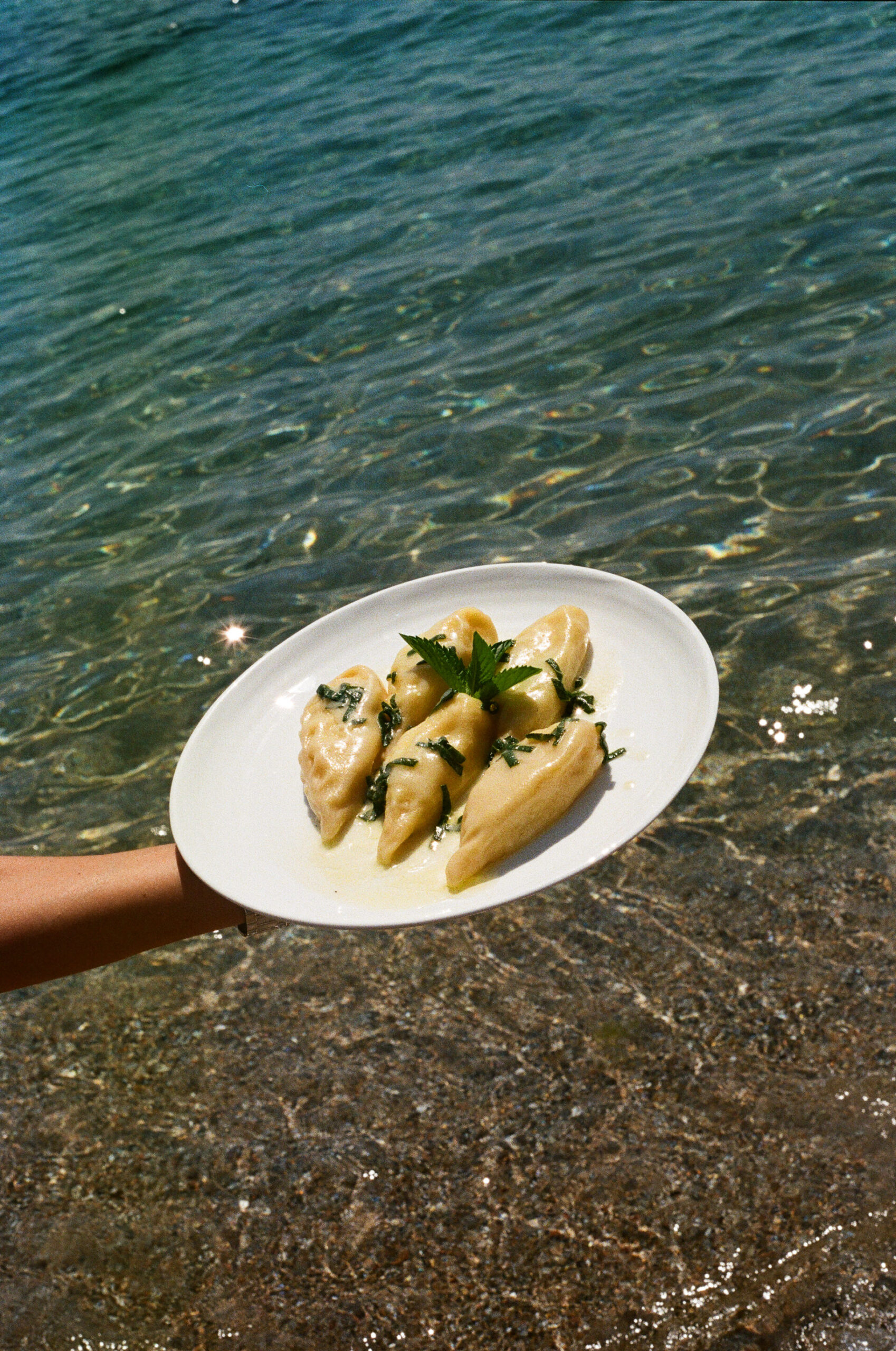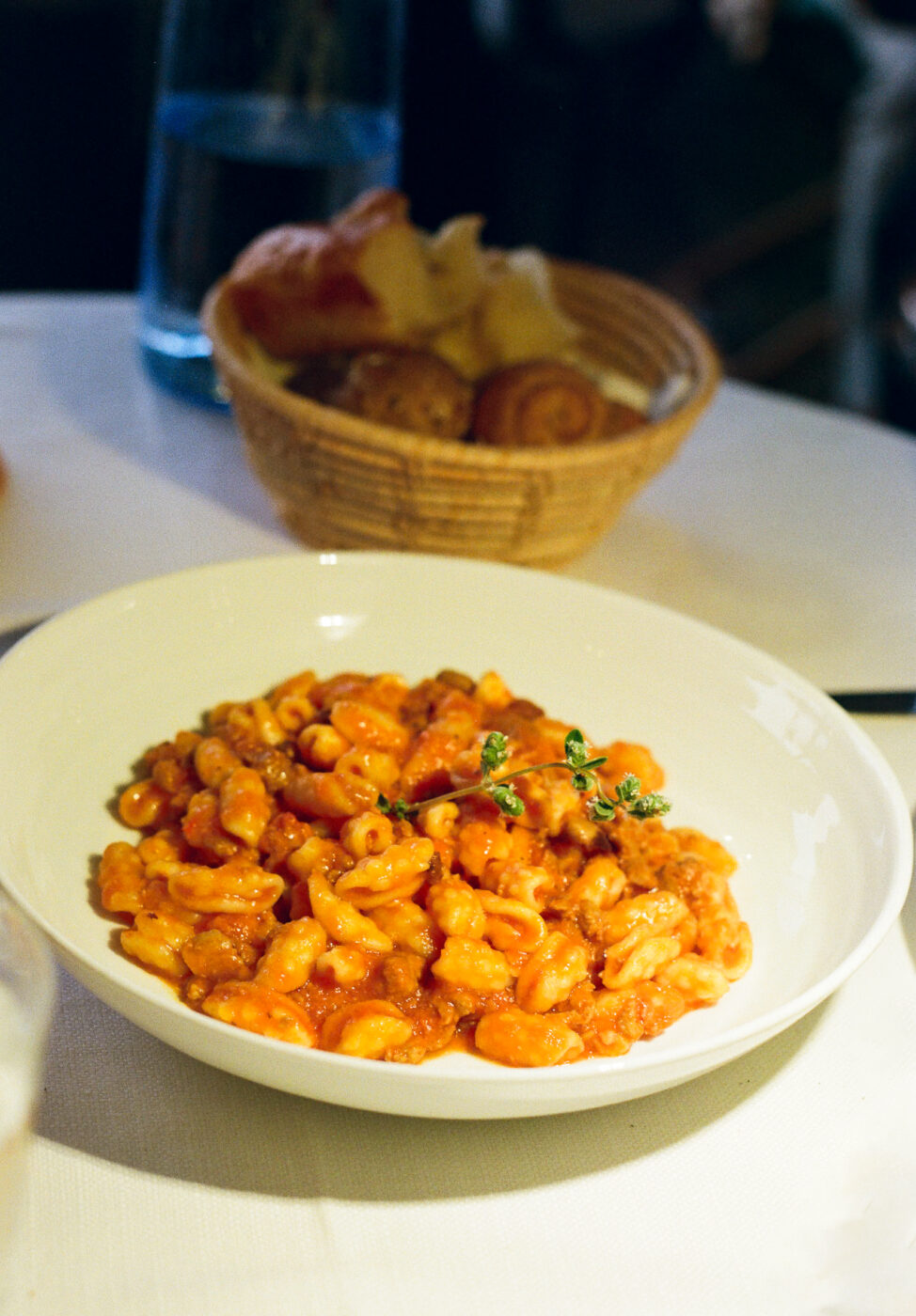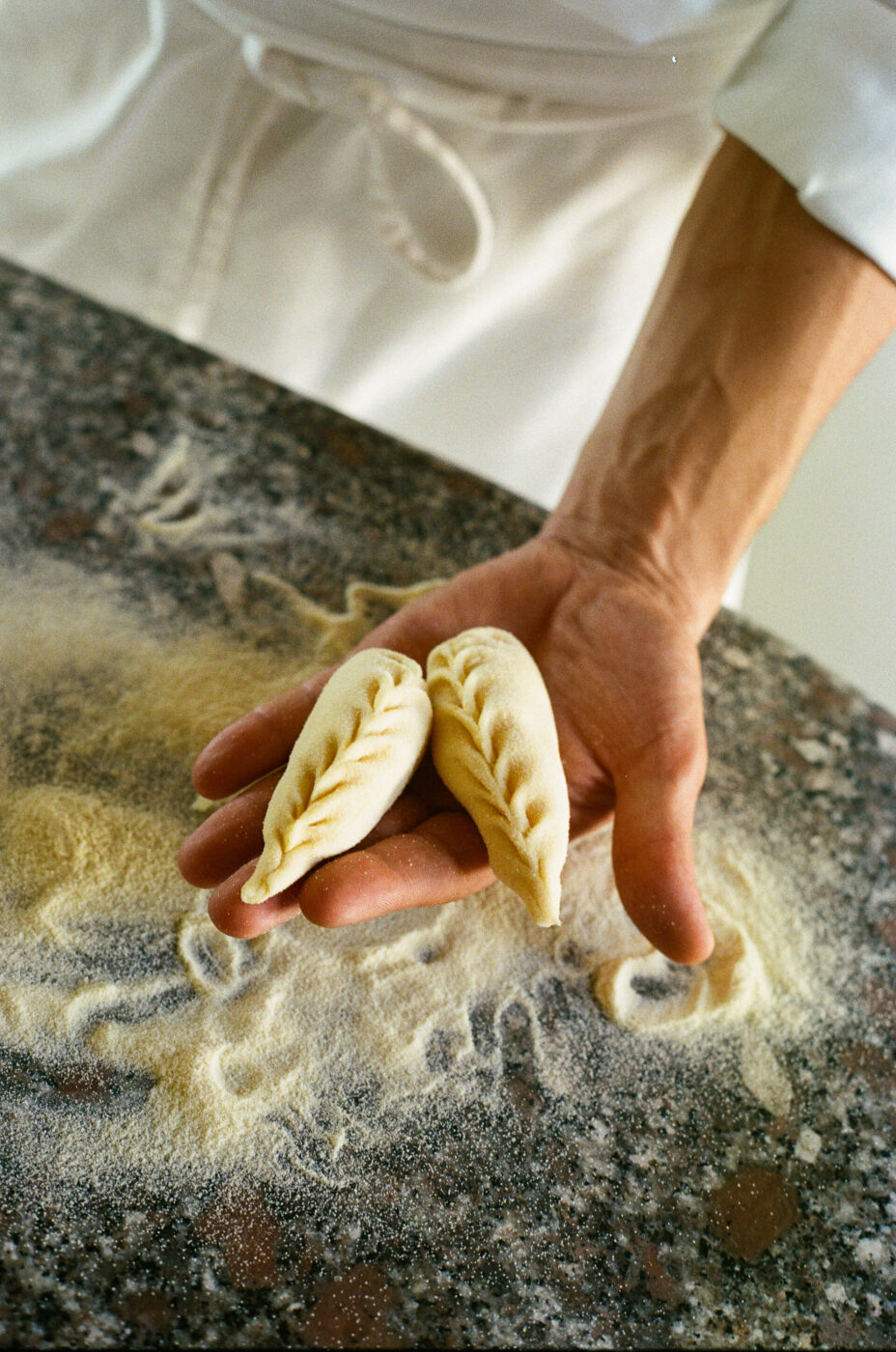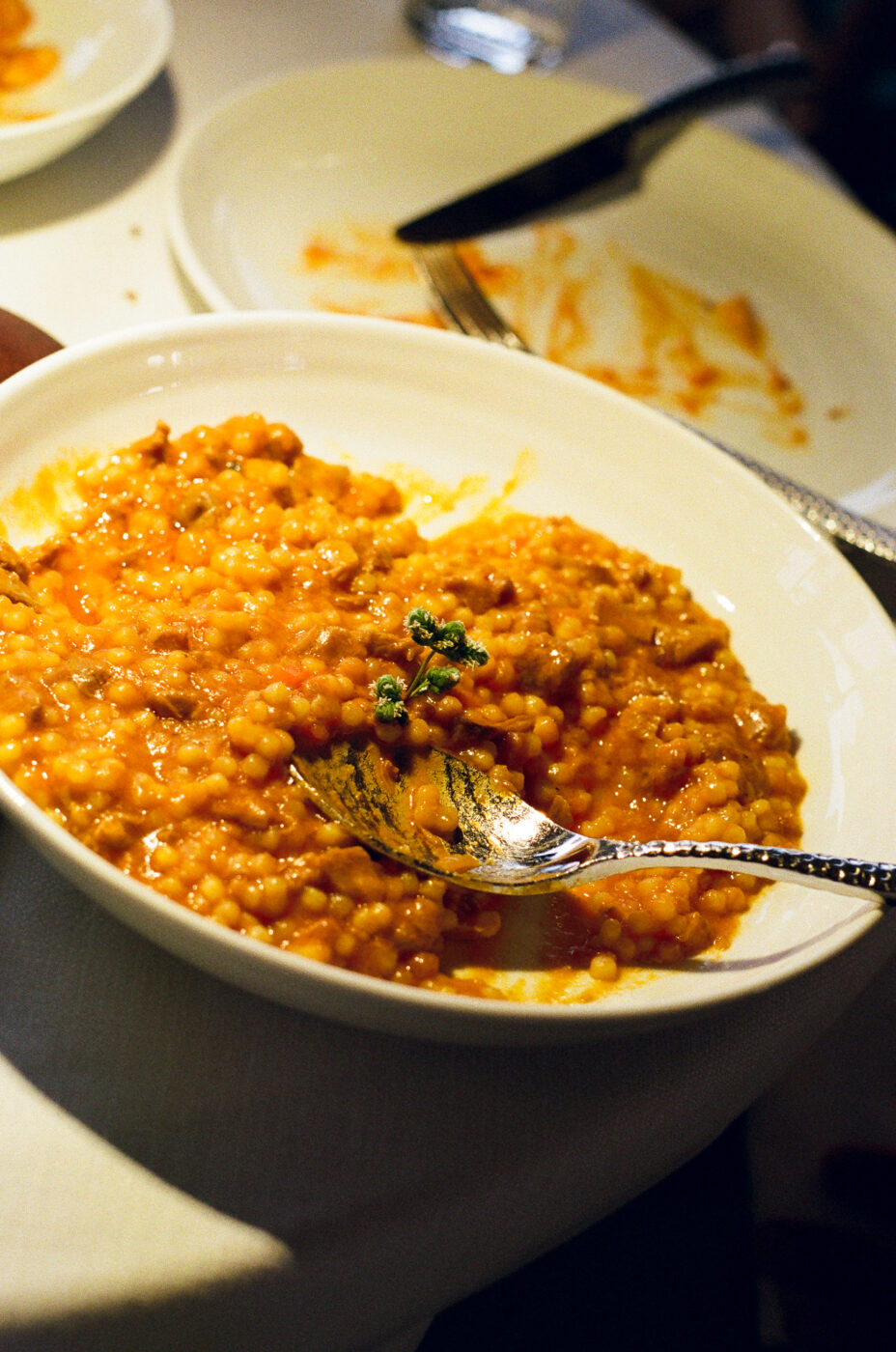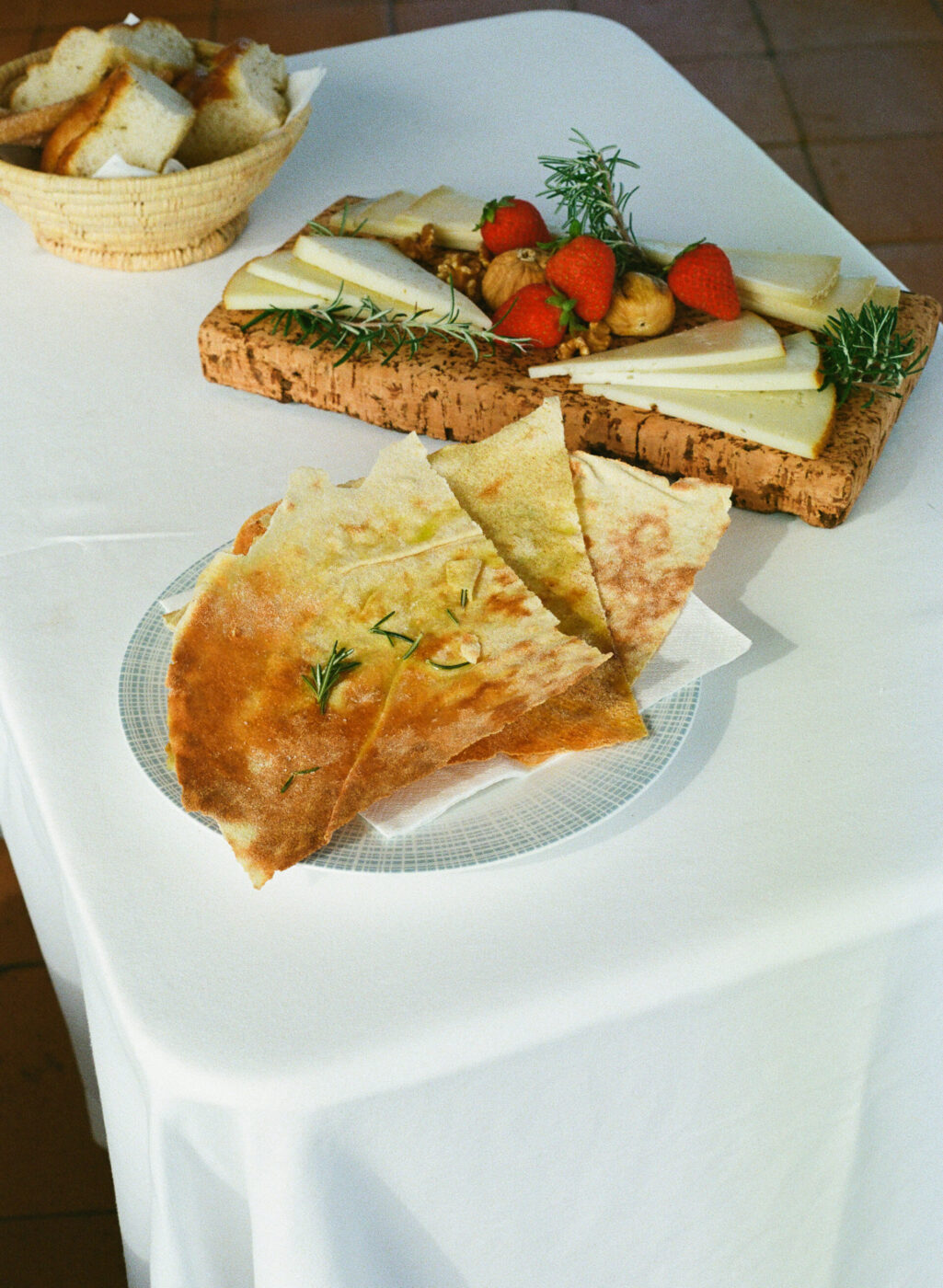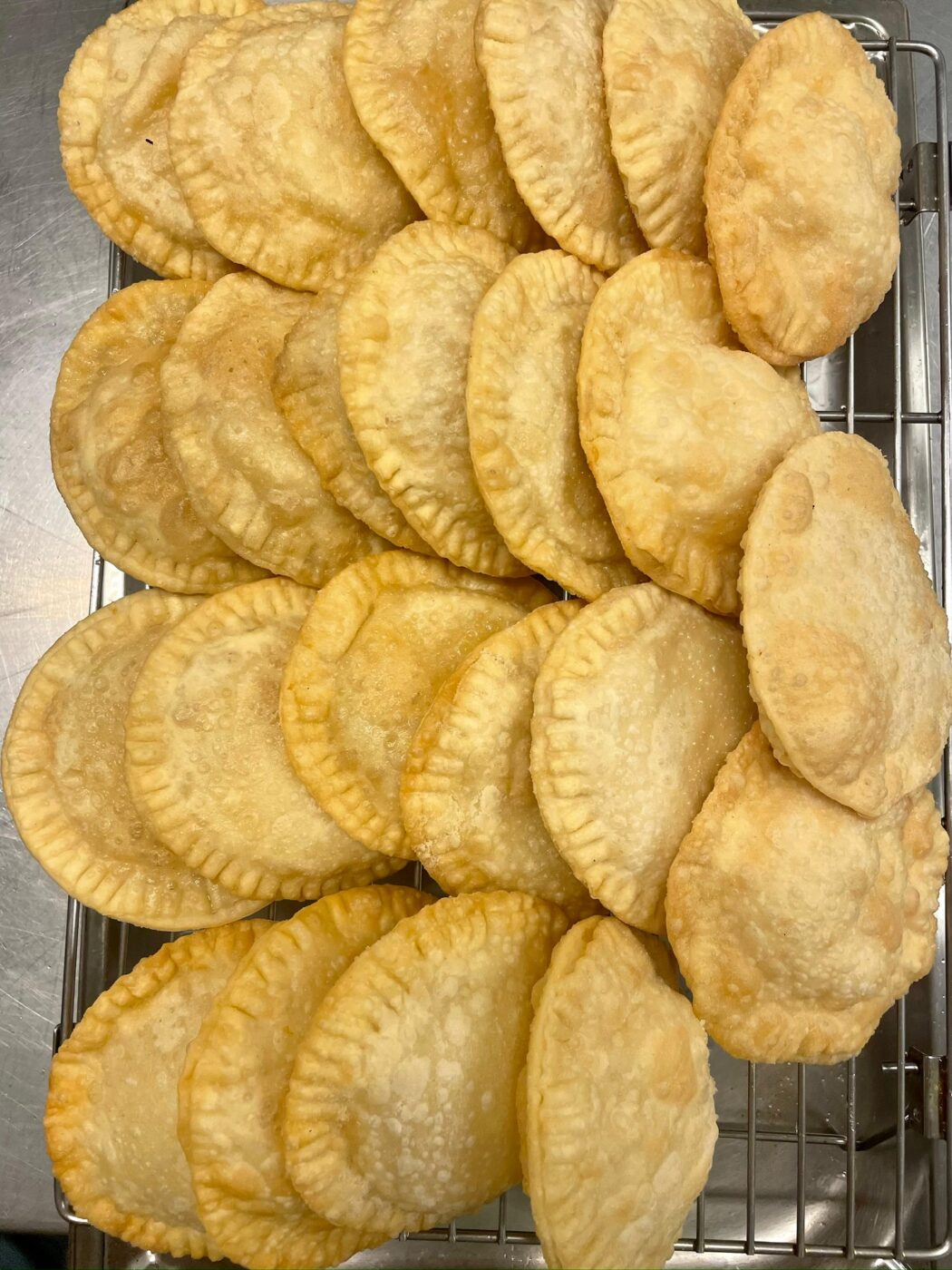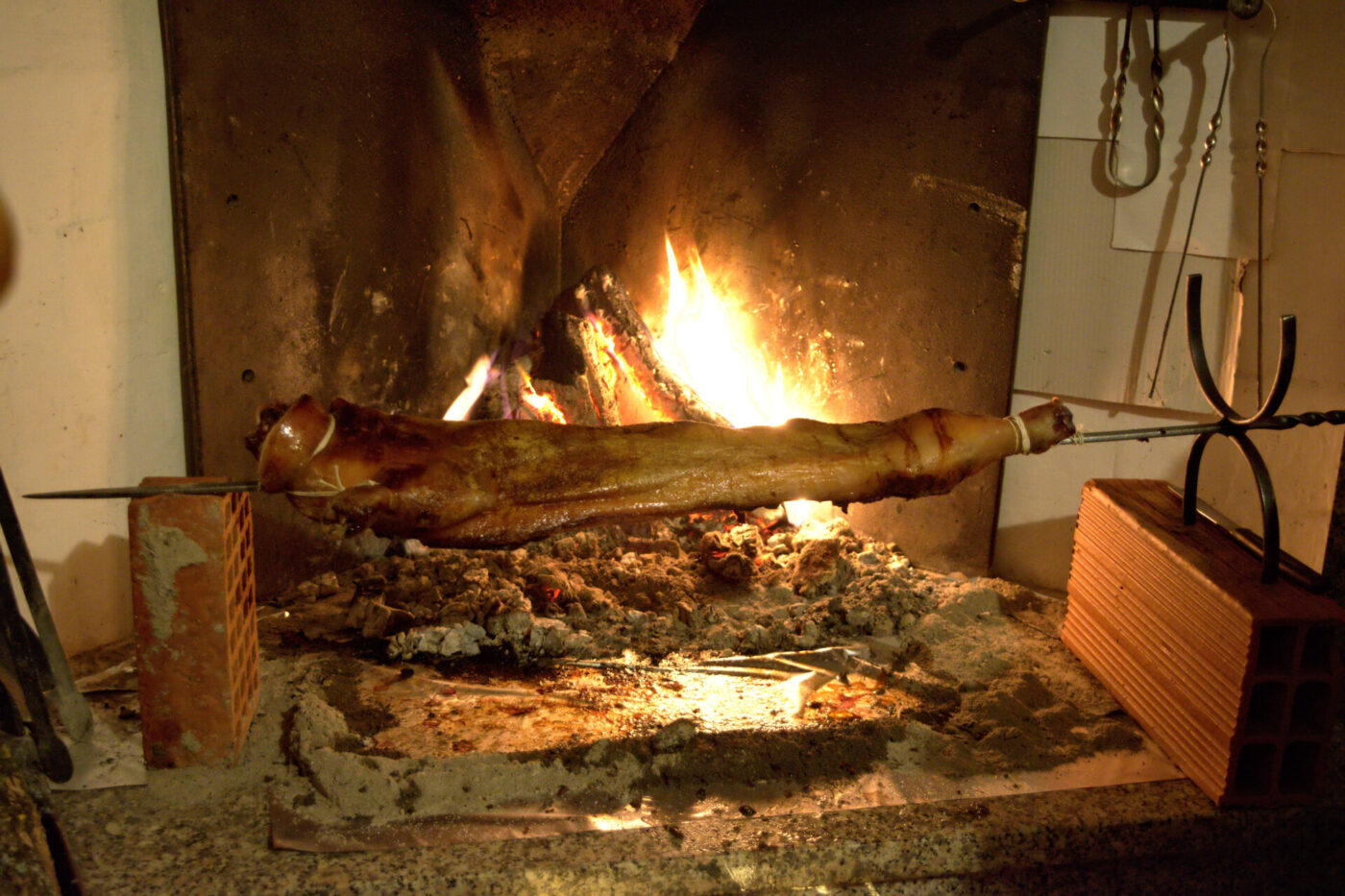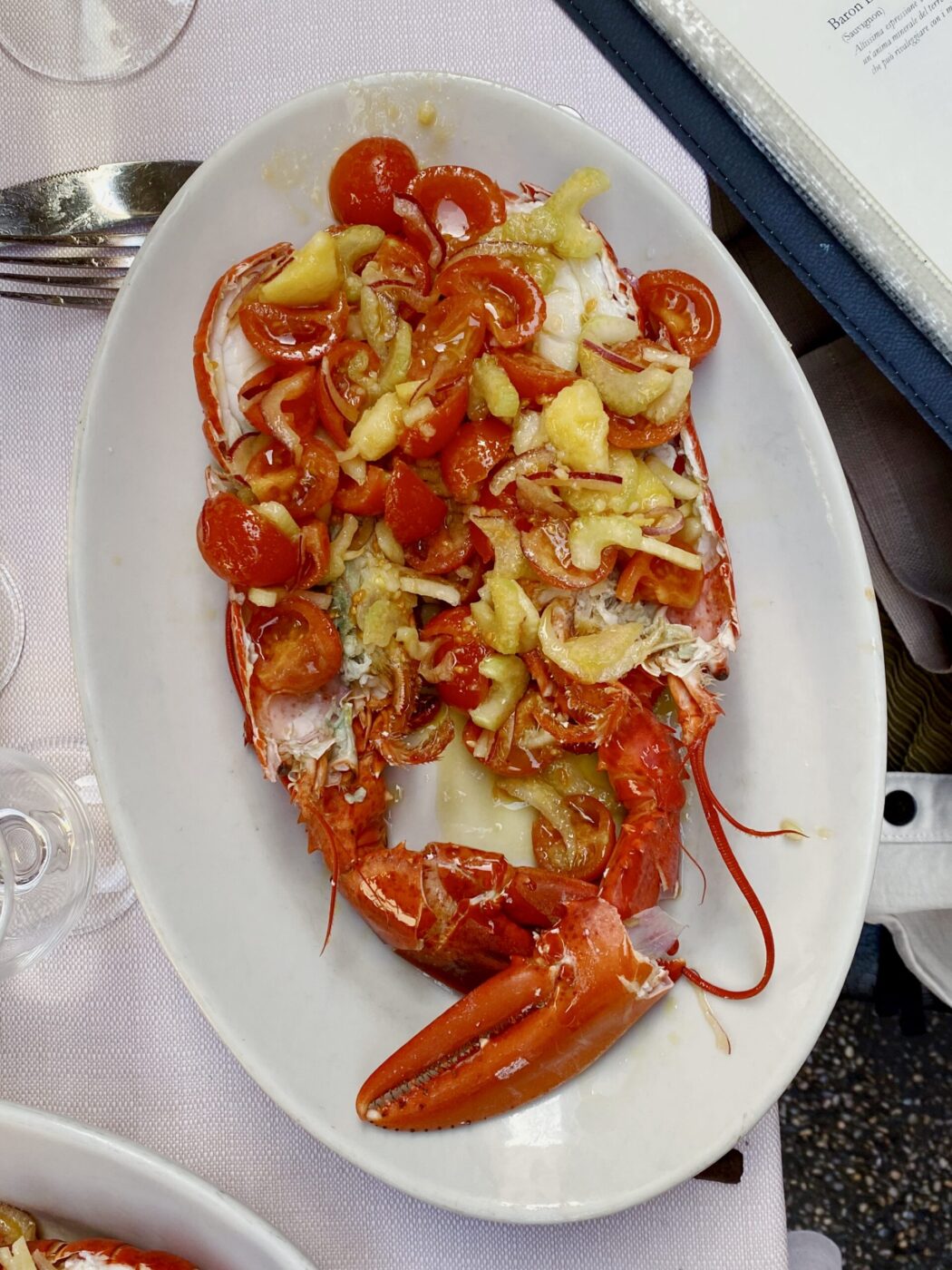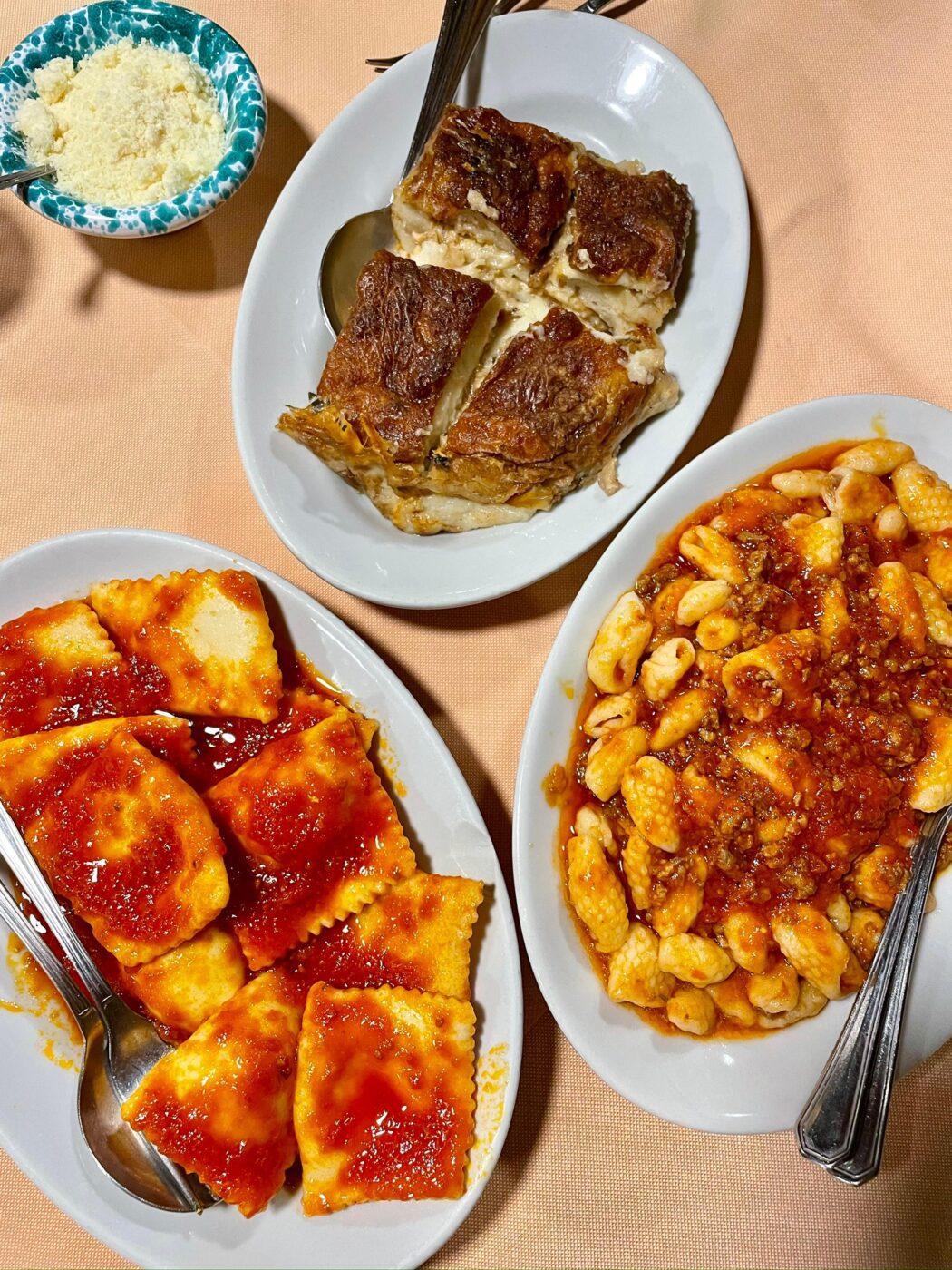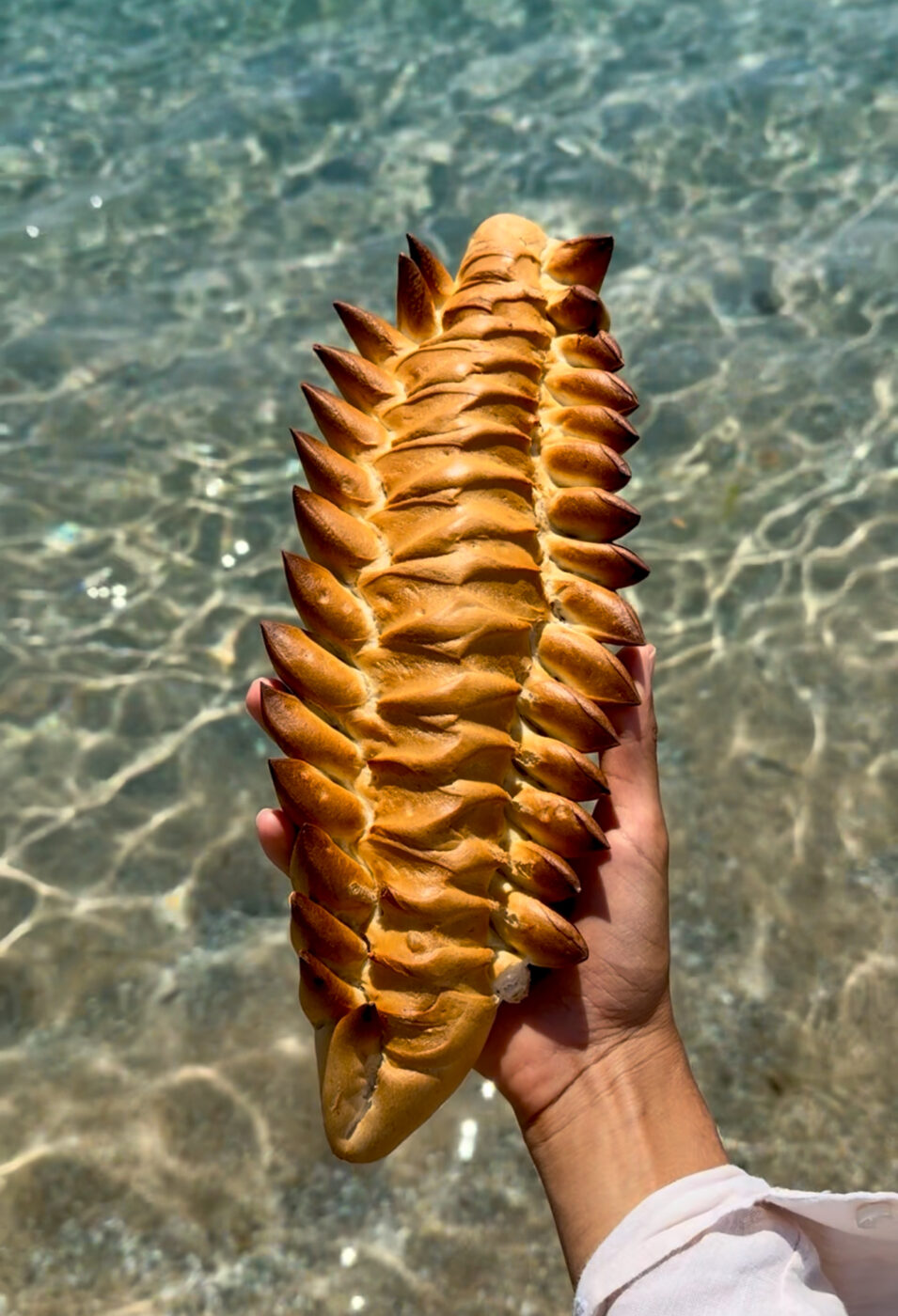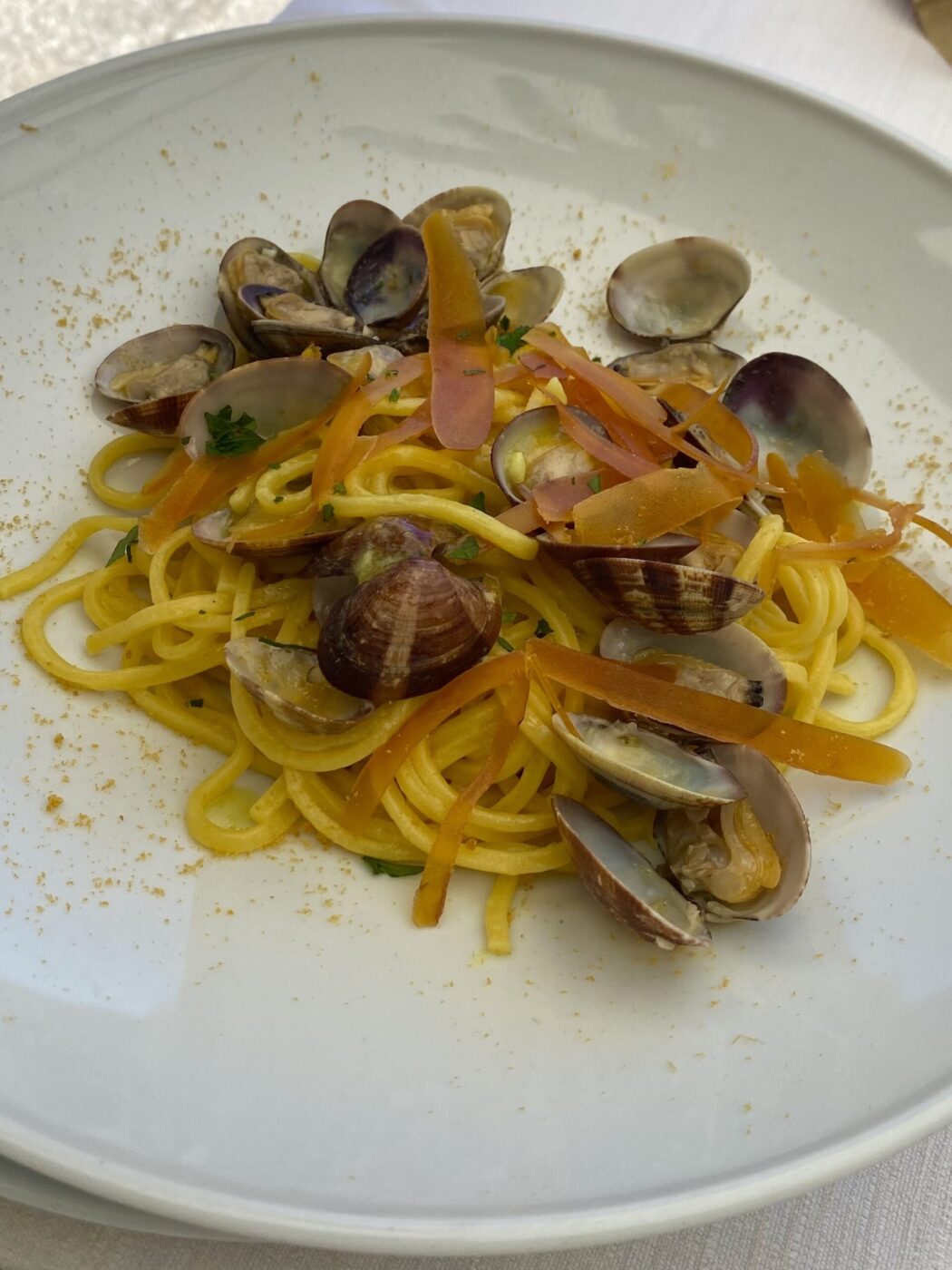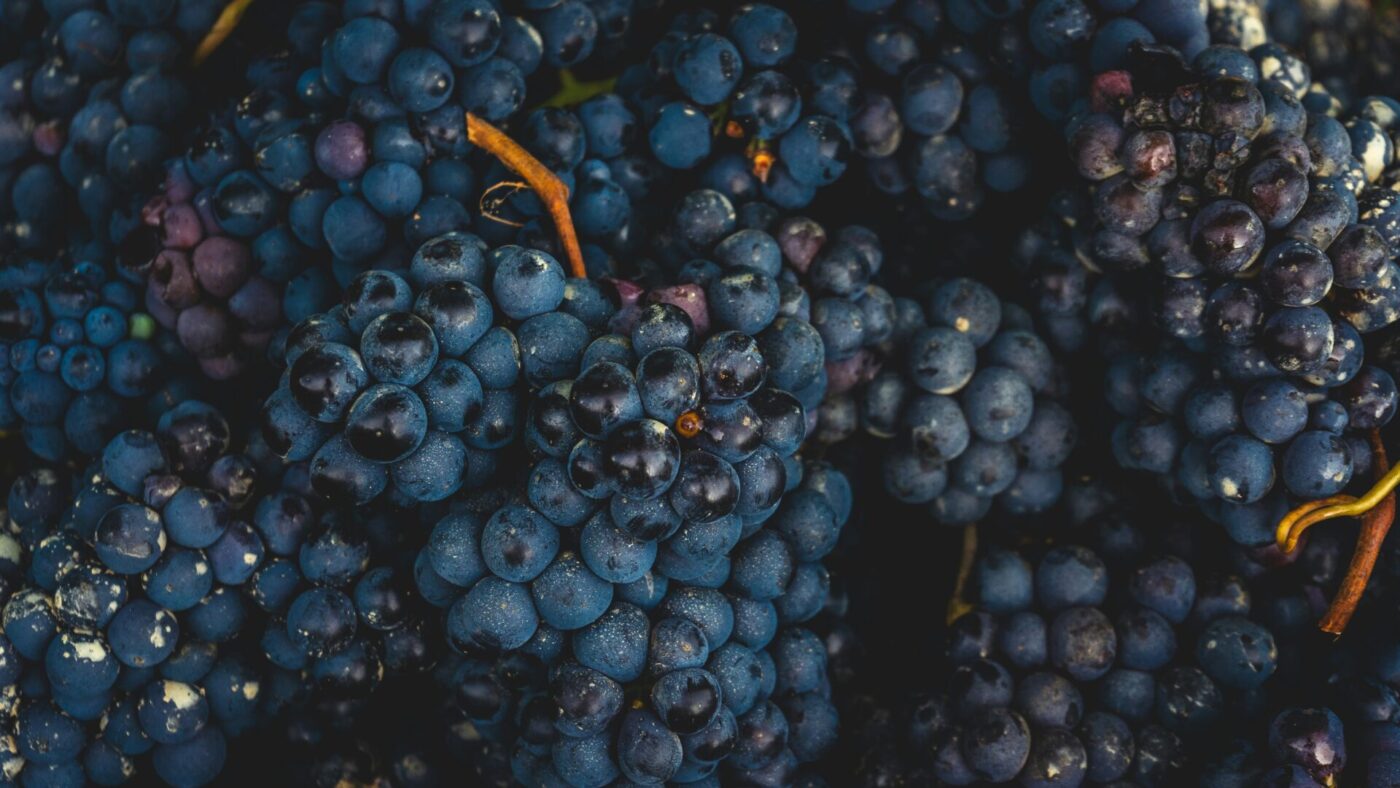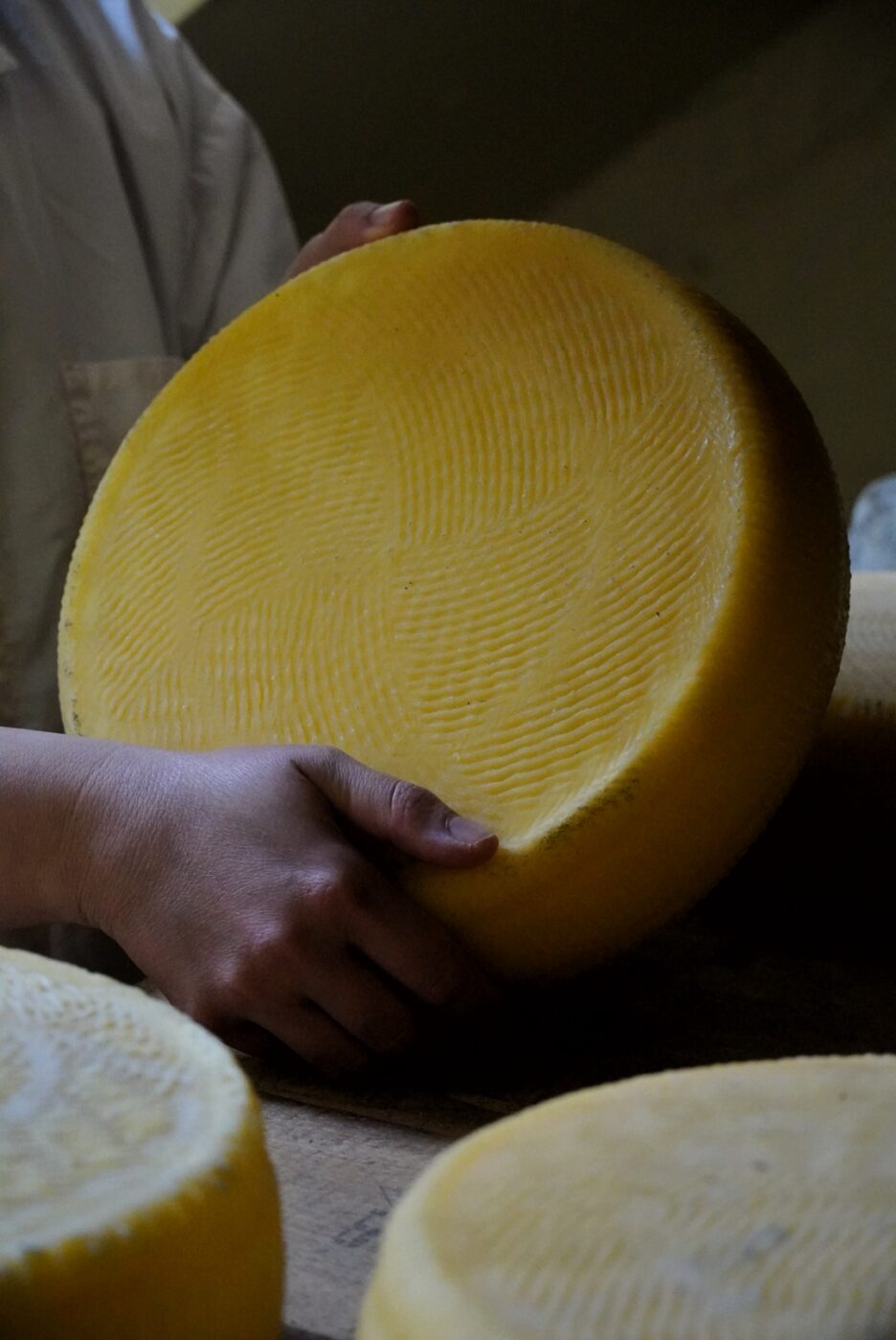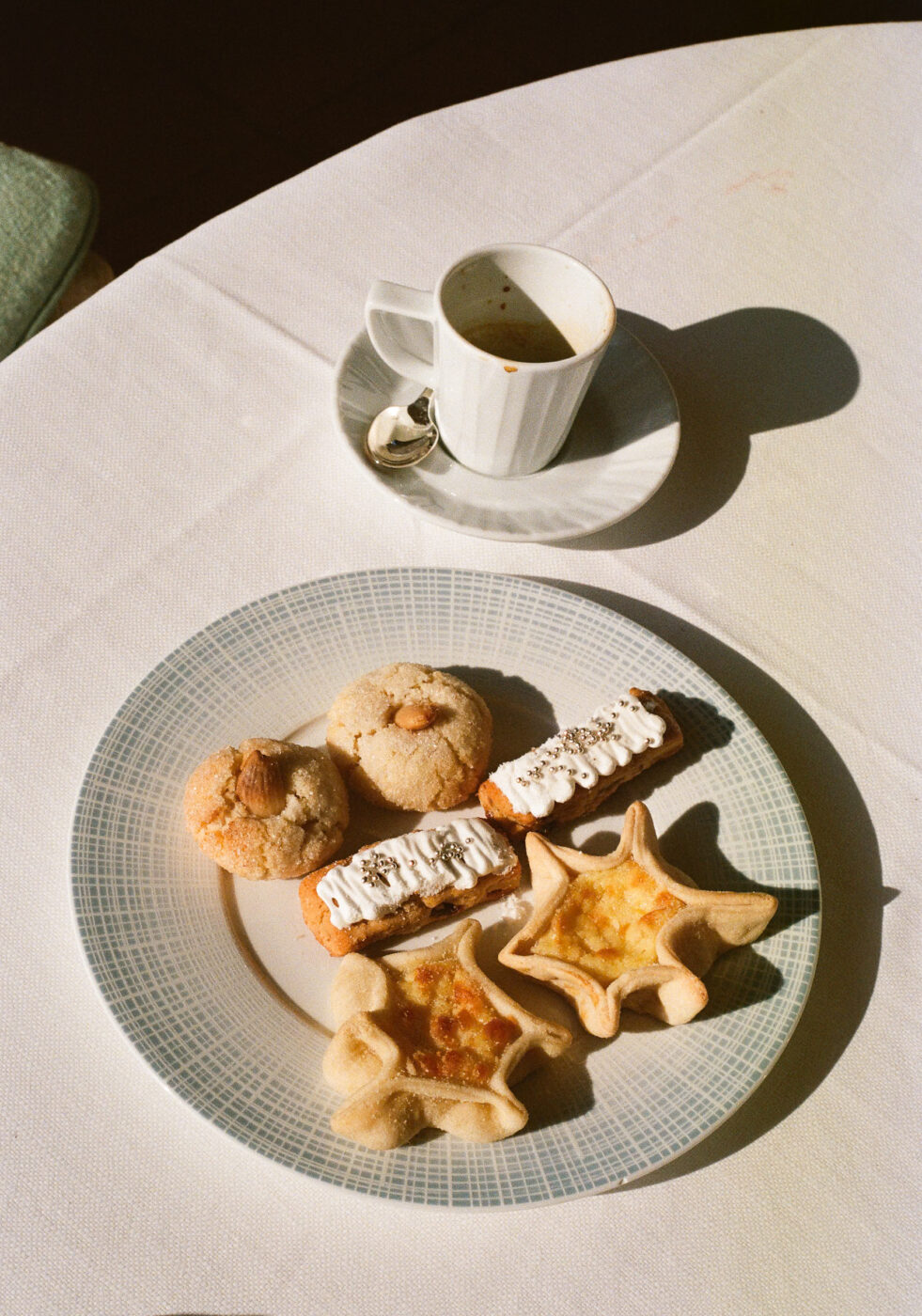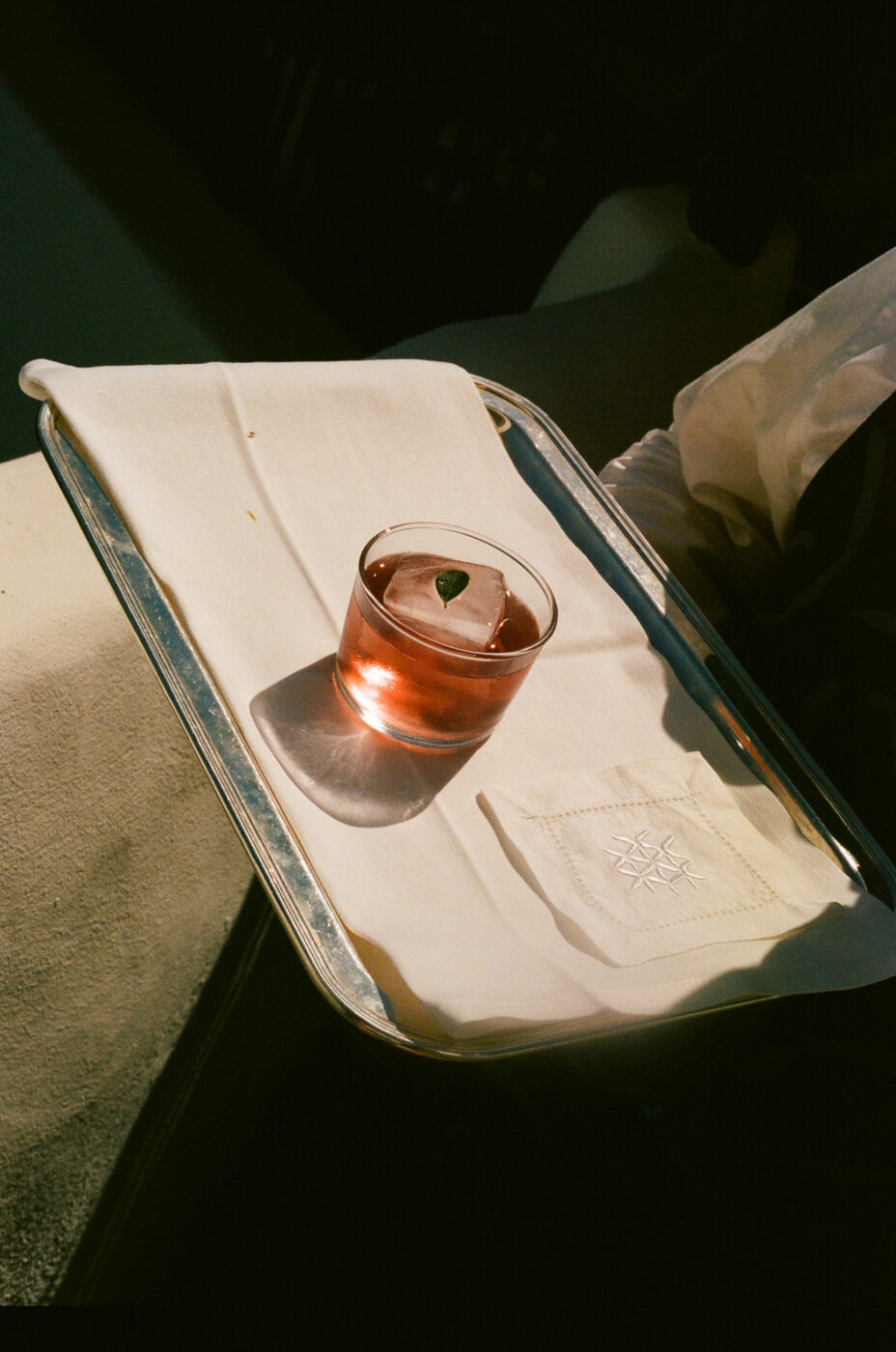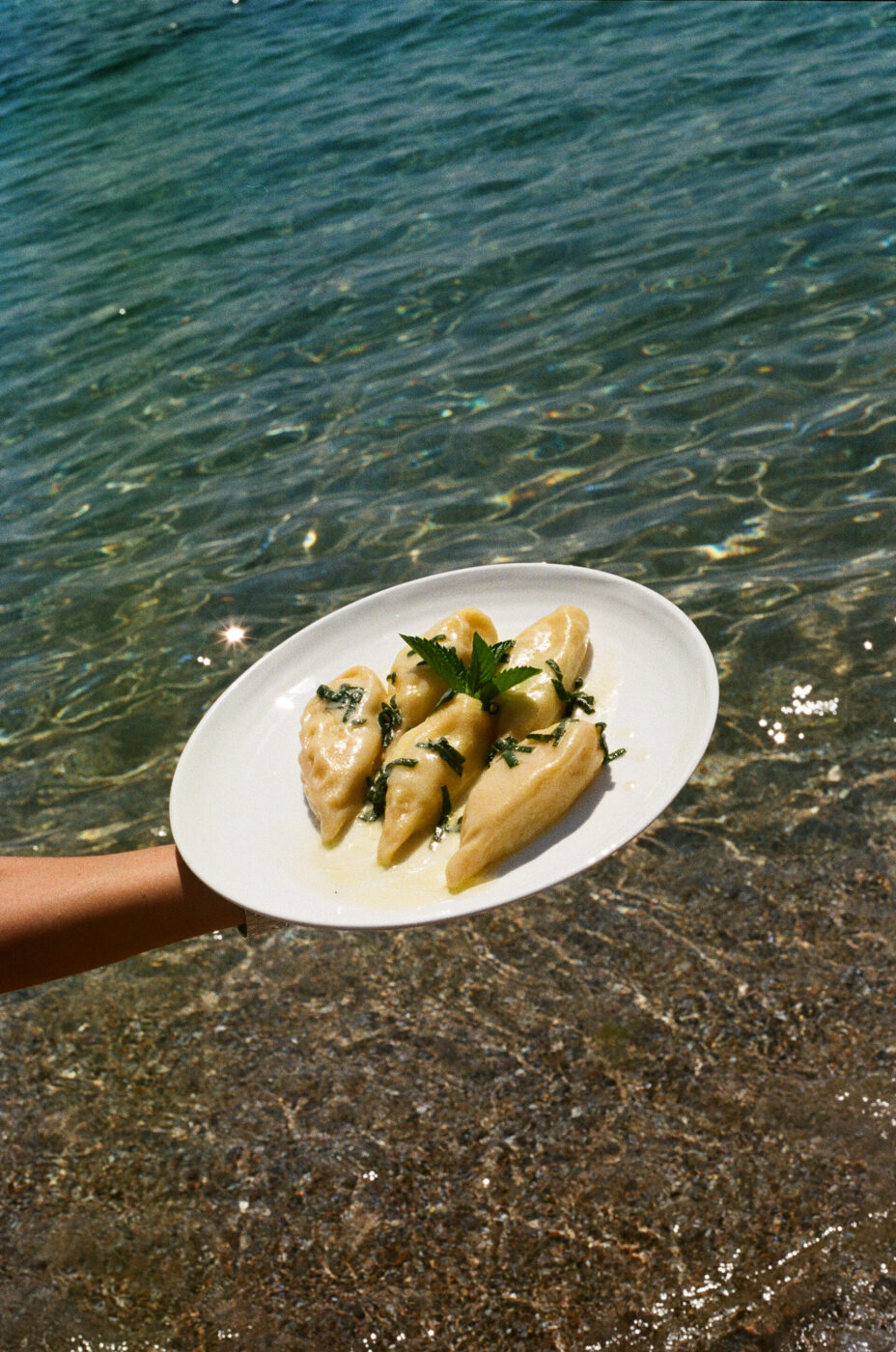Centenarians whiz by on their bicycles to enjoy a glass of Cannonau at home. A handful of women in a remote mountain village make the world’s rarest pasta. The same foods enjoyed in the Bronze Age are still found on tables 3,000 years later. Sardinia’s food culture is nothing if not fascinating.
The island has evolved separately from the mainland both culturally and geologically; 23 million years ago, Sardinia was connected to the Provençal coast in modern-day France. Residents consider themselves Sardinian first and Italian second. They speak their own language, sardo—the closest to Vulgar Latin of all the Romance languages. Words end in s. There are u’s and x’s everywhere. Malloreddus, casu axedu, culurgiones—are we in Spain? Malta? Ancient Rome? No, amici, you are in Sardinia. Benvenuti. Or, as the Sardinians say: beni benius.
The island’s culinary traditions, too, have been shaped both by its indigenous culture and its history of foreign domination. The Nuragic civilization, which flourished in the Bronze Age and is autochthonous to Sardinia, gave the island porceddu (roasted suckling pig) and fiore sardo cheese. The Phoenicians contributed bottarga and saffron, the Aragonese aragosta alla catalana (lobster alla catalana), and the House of Savoy (via some families from Genova) pesto and farinata.
Pecorino is Sardinia’s most ubiquitous ingredient, and shepherds the island’s most ubiquitous job occupation. The former makes its way into almost every meal (as it does in Rome… but that’s a story for a different day), and the latter are revered for their deep knowledge of the land, epic transhumance journeys, and ability to make something glorious from a rugged, mountainous, daunting landscape. These millennia-old pastoral traditions are preserved and celebrated via the canto a tenore, a UNESCO-recognized singing tradition where four men harmonize and adopt voices said to recall the sheep, the ox, the shepherd, and the wind.
Perhaps Sardinia’s biggest claim to fame, however, is its status as one of the world’s five Blue Zones: areas where people live healthier, and significantly longer, than the global average. Though not all the credit can go to the food (exercise, rest, and climate all play a factor), there is something to be said for the island’s cuisine. So here, a crash course on the 20 foods you must try when you next visit Sardinia, the island some believe to be the mythical Atlantis.
Malloreddus alla Campidanese
For ragù devotees, a plate of malloreddus alla campidanese is a good place to start. Malloreddus are also known as gnocchetti sardi, despite looking more like ridged cavatelli than gnocchi. Their name comes from the diminutive of malloru (“bull” in Sardinian), as the pasta’s shape is said to be reminiscent of a calf’s pot belly. The ridges on malloreddus are perfect to scoop up the campidanese sauce of pork and fennel sausage, tomato, onion, saffron, and pecorino sardo. Campidanese refers to the Campidano area in south-west Sardinia, but malloreddus can be paired with other sauces (sheep ragù, pesto, or melted cheese) and called other names (ciggioni, cassuli, maccarones furriados) depending on where you are on the island.
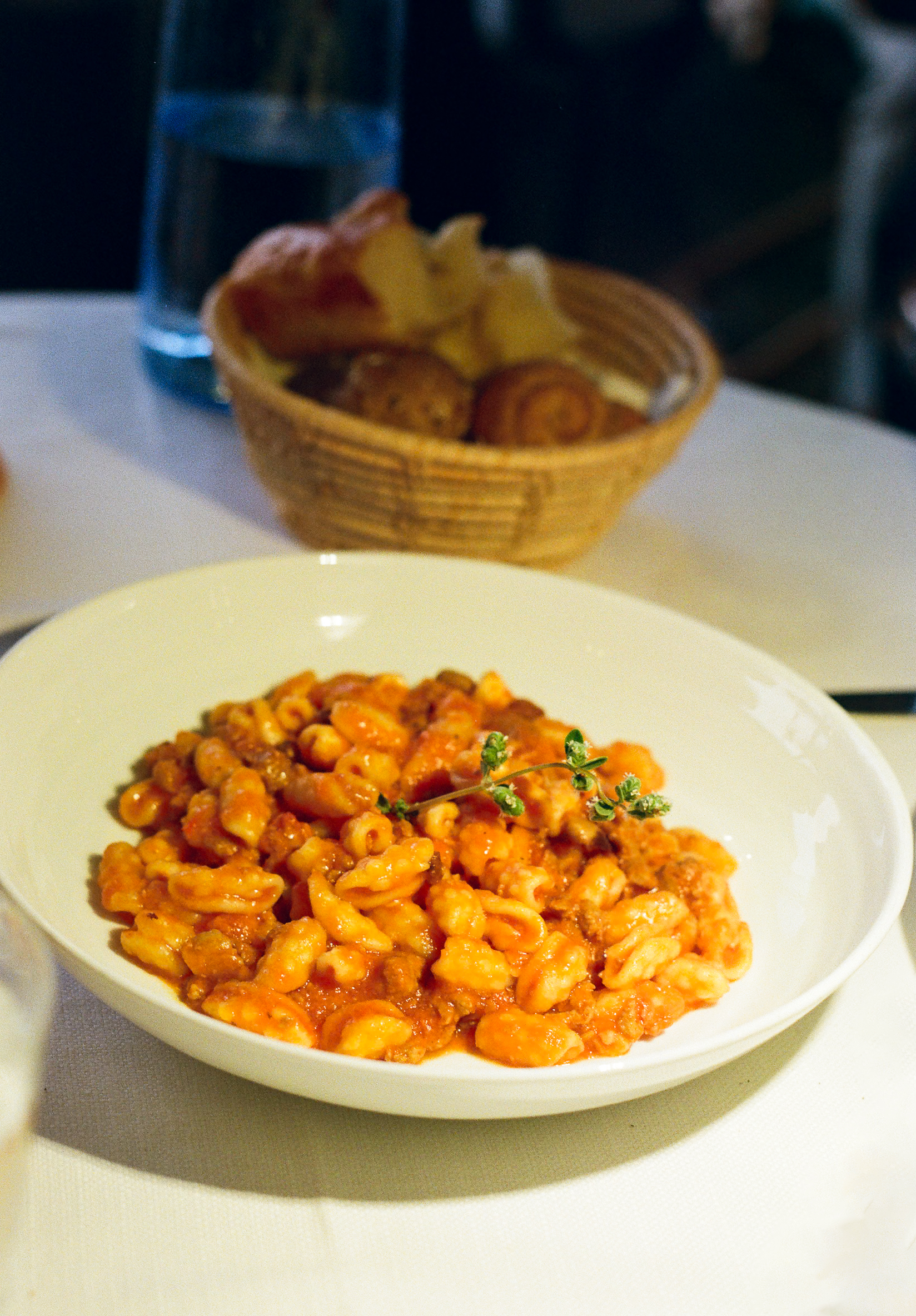
Culurgiones
As an ode to the plant used to make this pasta shape, and historically prepared to celebrate the grain harvest, culurgiones are ravioli shaped like ears of wheat. The spighitta wheat spike shape is deceptively difficult to create and a testament to the skillful hands of Sardinian women. Most commonly, culurgiones are filled with potatoes, mint, and pecorino, and topped with a simple tomato sauce. The result is a comforting, creamy interior balanced by the refreshing tang of tomatoes and the coolness of mint. Though they can now be found across the entire island, culurgiones hail from the eastern Sardinian region of Ogliastra. They often have different fillings depending on the town you visit—sometimes onions and garlic make an appearance. During Carnevale, a sweet, fried version of culurgiones replaces the savory ingredients with almonds, walnuts, ricotta, lemon peel, orange peel, and honey.
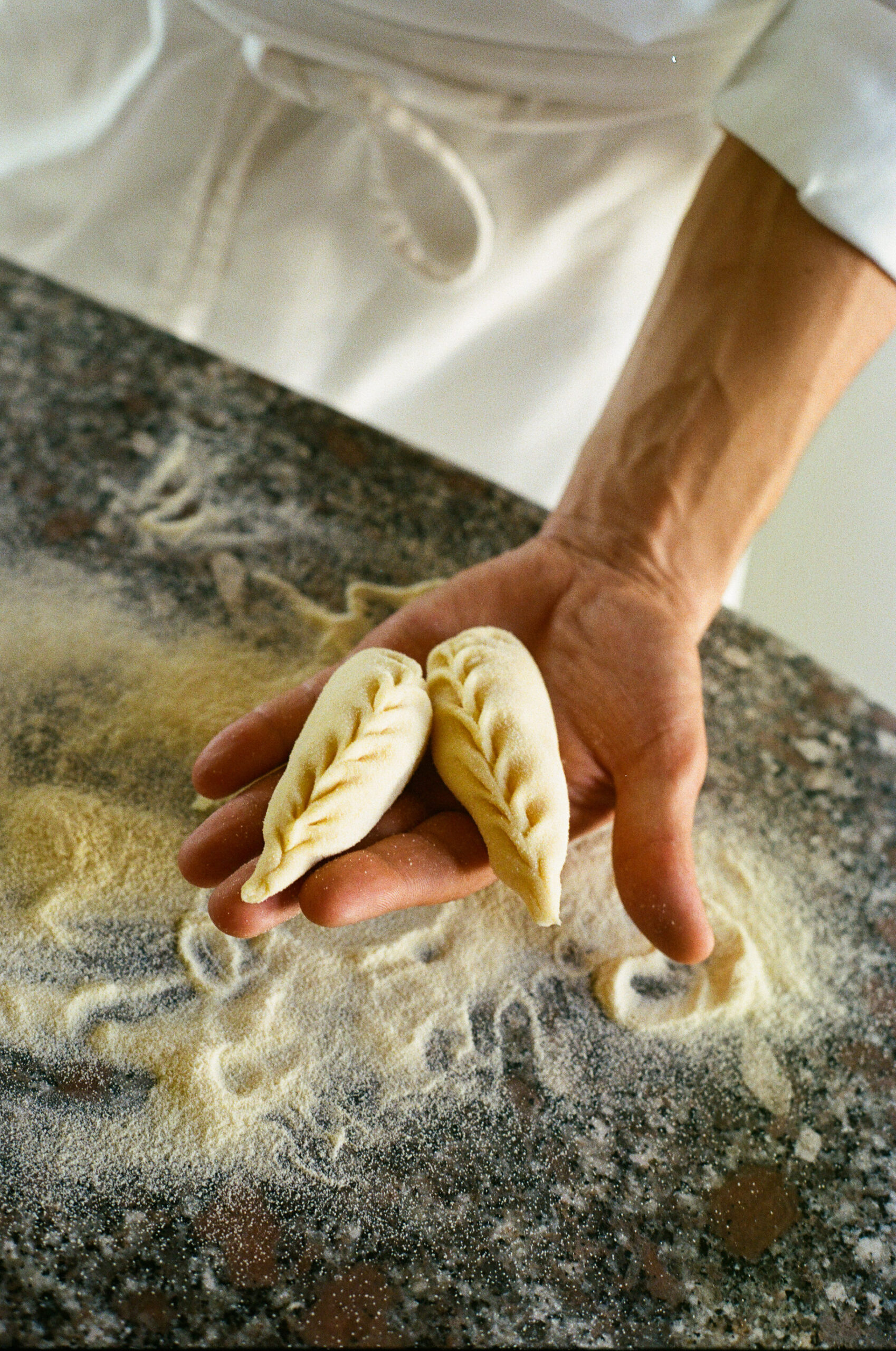
Fregula
Fregula is a Sardinian pasta that you should certainly not mistake for couscous nor misspell as fregola, urges Angela, the proprietress of the agriturismo L’Oasi del Cervo on the southwest Costa Verde. Instead, this small, Israeli-couscous-like “pasta” is made with semola (a fine grind of hard durum wheat)—not farina (a flour made from soft wheat, a different species)—and water that has been salted and infused with saffron, the profumo of Sardinia. The grains are traditionally formed by hand in a large terracotta bowl called a scivedda. Spoonfuls of the water are added bit by bit to the semola as someone circulates the growing fregula grains round and round the scivedda. When they have reached their correct size and shape—something like a peppercorn—the fregule are dried and then toasted to bring out a nutty flavor. To serve, they are boiled like pasta in water or a fishy broth to soak up all the flavor: think fregula con le arselle (wedge clams).
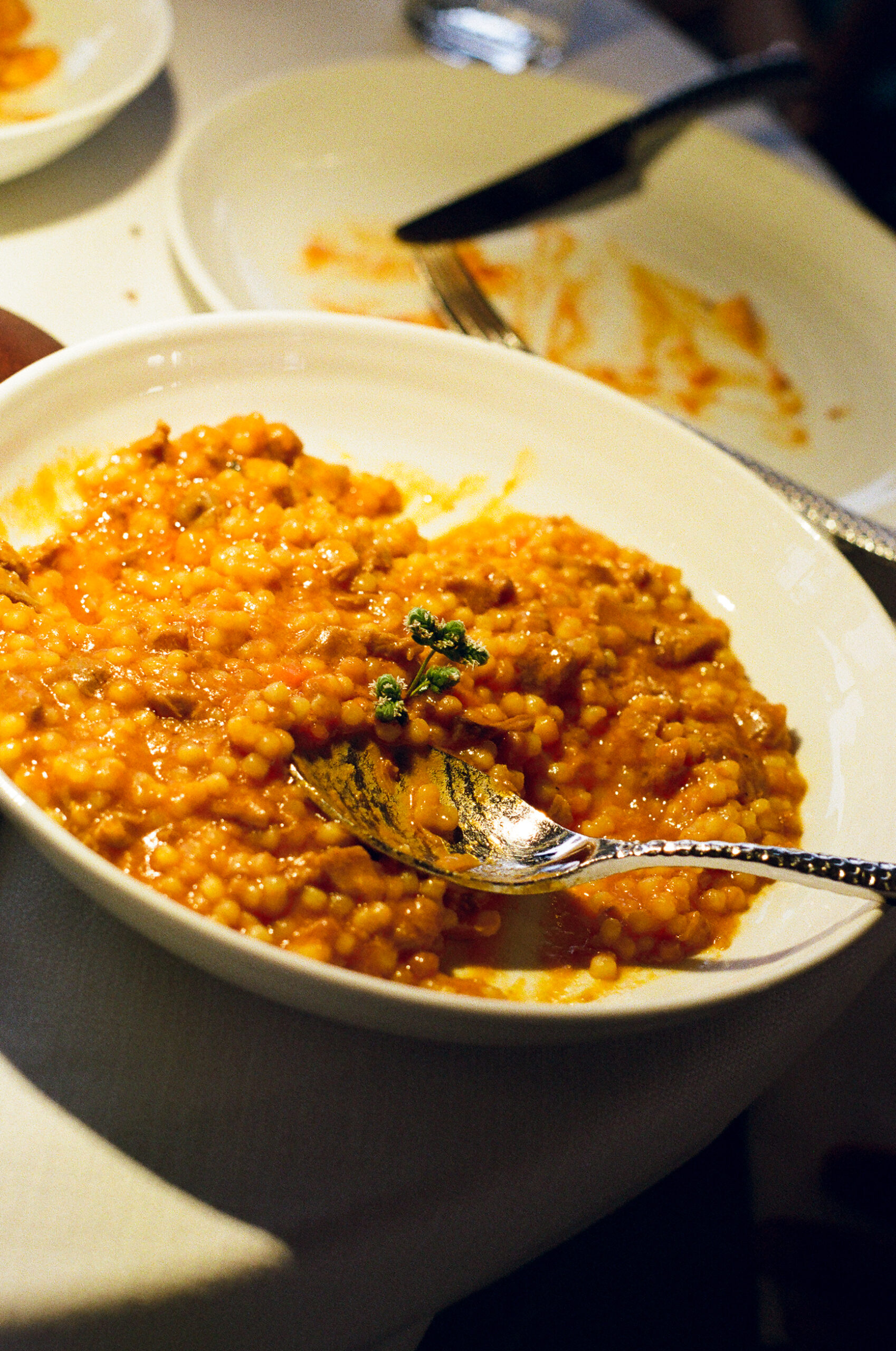
Pane Carasau
A staple on every Sardinian table is pane carasau, a twice-baked semolina flour flatbread—and by flat, we mean paper-thin. In fact, pane carasau is called carta da musica by mainlanders because it resembles sheet music parchment, makes a satisfying musical crack when you break it, and is so thin you might even be able to read a Verdi score through it. When put into the oven for the first time, pane carasau puffs up into something akin to a balloon. It is then cooled, cut into two layers, and toasted again, sheet by sheet. The result is a crispy bread-cracker with a consistency reminiscent of Indian papadam. At least 3,000 years old, pane carasau was originally a staple of Sardinian shepherds, since it was light, portable, and could last for (wait for it) one year (they also sometimes used rounds of it in lieu of plates). It’s the perfect accompaniment to any meal, or prepared in pane frattau (stock-soaked pane carasau topped with tomato sauce, pecorino, and a fried egg) or lasagne di pane carasau, where pasta sheets are swapped for these musical flatbreads.
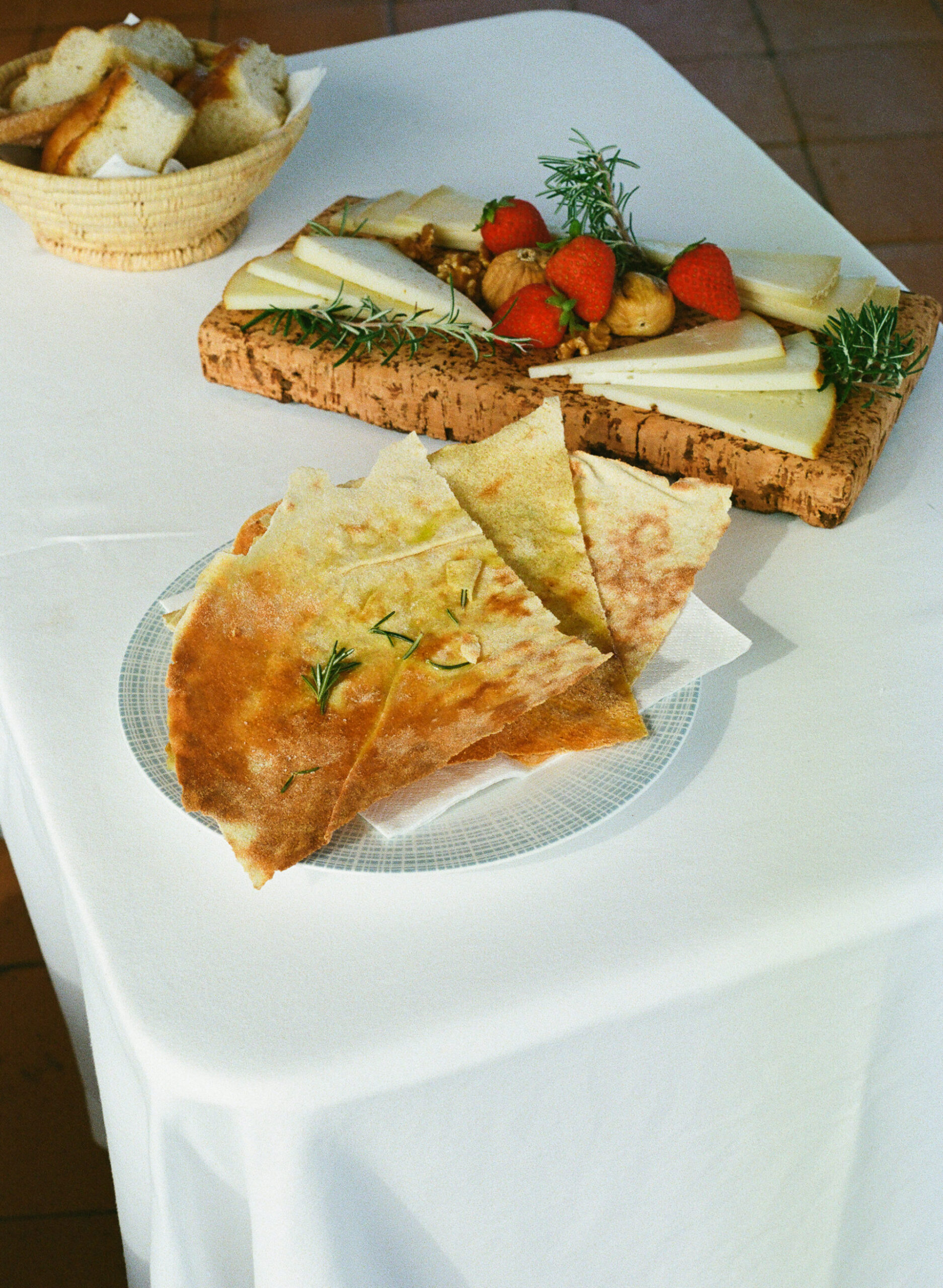
Seadas
Imagine a deep-fried raviolo the size of a personal pie, filled with melted sheep’s cheese and drizzled with honey. Enter: the seada. This dessert’s dough is enriched with lard (a preparation Sardinians call pasta violada, or softened dough), and the filling is made of tangy, unsalted, fresh pecorino traditionally left out in a damp cloth for a couple days to turn gently acidic. In one bite of a seada, you taste the tartness of the pecorino, the comforting bready dough, and the bitter flavor of corbezzolo honey, made exclusively in Sardinia when the strawberry trees bloom in the autumn. Though Cicero wasn’t a fan of this “bad honey”, modern connoisseurs laud its notes of liquorice, leather, and coffee, and scientists its ability to reduce the growth of cancer cells. Some food historians interpret a dish in Petronius’s 1st-century CE novel The Satyricon as an ancient seada, but even if the flour-cheese-honey recipe wasn’t quite the same, it’s certainly a great combo of ingredients.
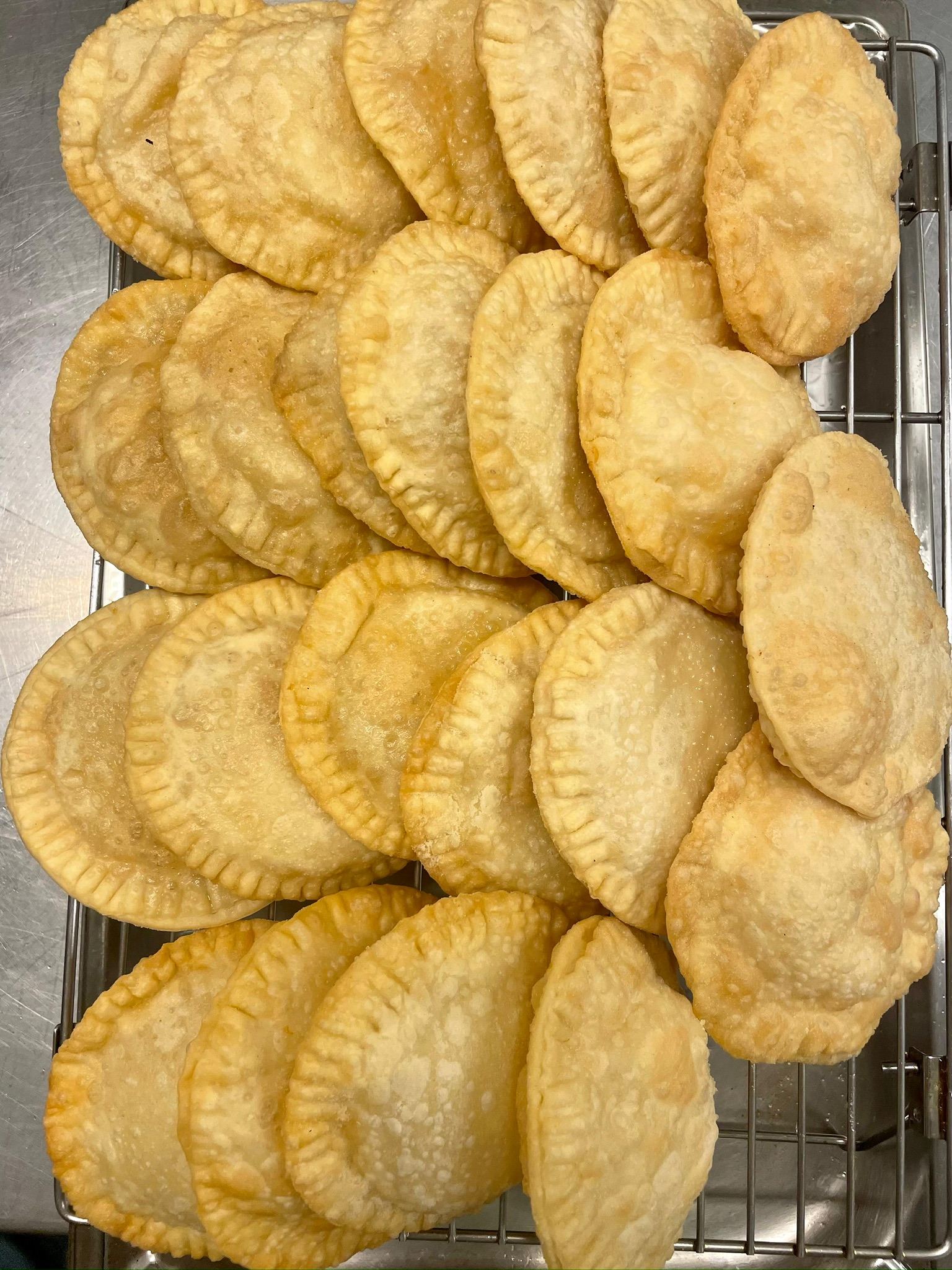
Freshly fried seadas; Photo by Sara Cagle
Porceddu
An entire suckling pig roasted vertically on a spit inevitably evokes celebration, festival, and community; Sardinian porceddu has been this centerpiece of community togetherness from ancient times to today. Ancient pig figurines and bone piles suggest the porceddu tradition may go back to the Bronze Age Nuragic civilization of Sardinia, which also gave the island its enigmatic honeycomb stone towers. These days, pick the right restaurant—or secure an invite to a local’s party—and you can sample this mouthwatering dish. To make porceddu, a piglet no older than 40 days has its innards and hair removed and is seasoned with a house blend that may include olive oil, salt, pepper, myrtle, rosemary, garlic, and/or wild fennel. The piglet is then slow roasted on a spit for about four hours until the skin is crunchy and the meat inside melts in your mouth. In an even more labor-intensive tradition—steeped in a history of bandits hiding their cooking—the porceddu is wrapped in myrtle leaves and buried underground in a pit with embers, while a fire burns on top of it. You only have to wait 6-12 hours for that version.
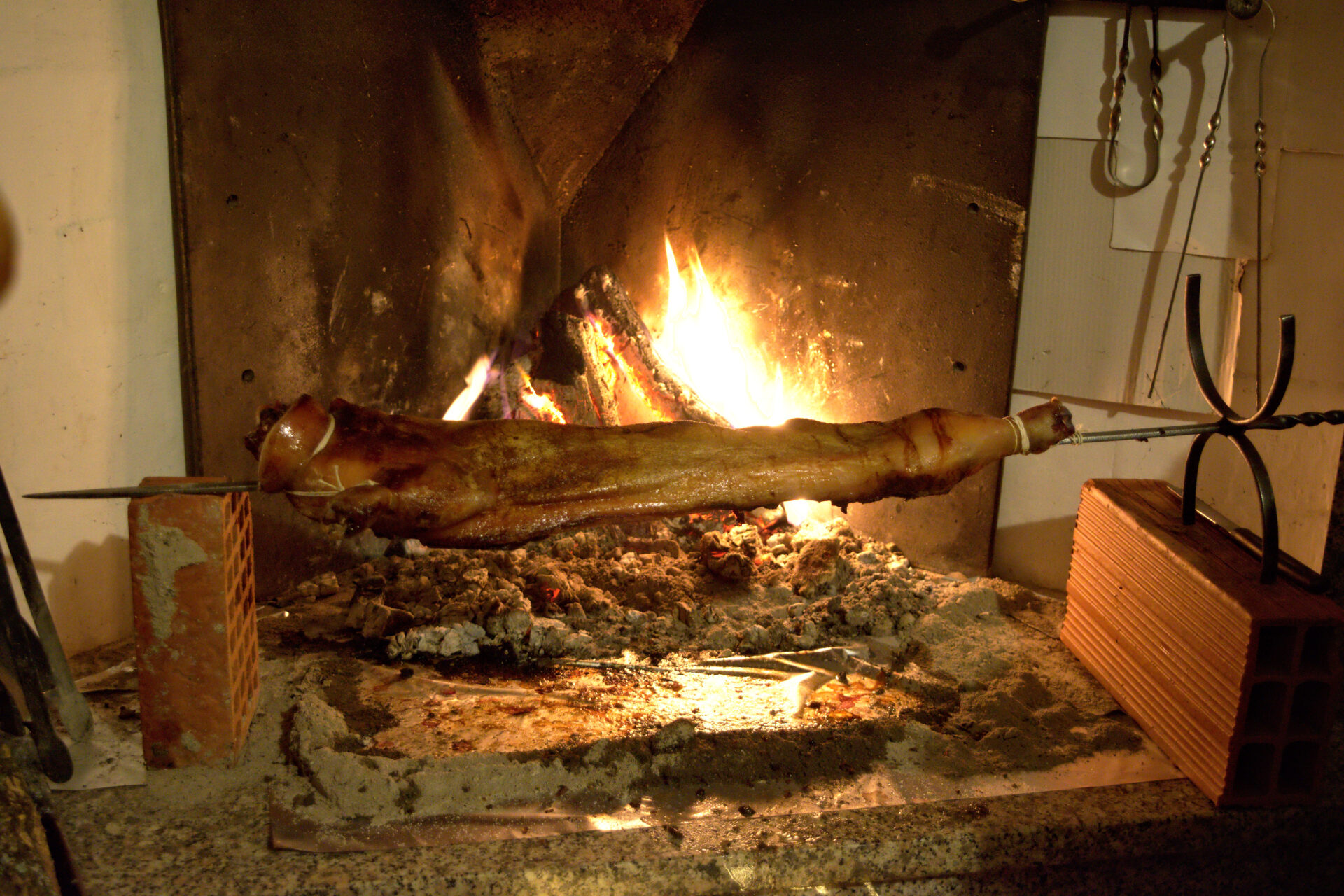
Courtesy of Japs 88 - Own work, CC BY-SA 4.0,
Aragosta alla Catalana
Aragosta alla catalana is a spiny lobster dish that exemplifies northwest Sardinia’s Spanish history. For this secondo, the lobster is boiled and its meat is removed from the shell and mixed with tomatoes, red onions that have been calmed in a bath of vinegar water, and a dressing of olive oil, lemon juice, salt, and pepper. Sometimes the shell is reintegrated to up the drama of the presentation. The dish comes from Alghero, a city nicknamed Barceloneta (little Barcelona) due to its 14th-century Catalan occupation and subsequent architectural and linguistic legacy (the algherese dialect is a variant of the Catalan language). The aragosta of the pristine waters surrounding Alghero is of such high quality—Queen Elizabeth II wanted this specific lobster at her wedding—that the understated alla catalana preparation is all it needs. Seafood simplicity at its finest.
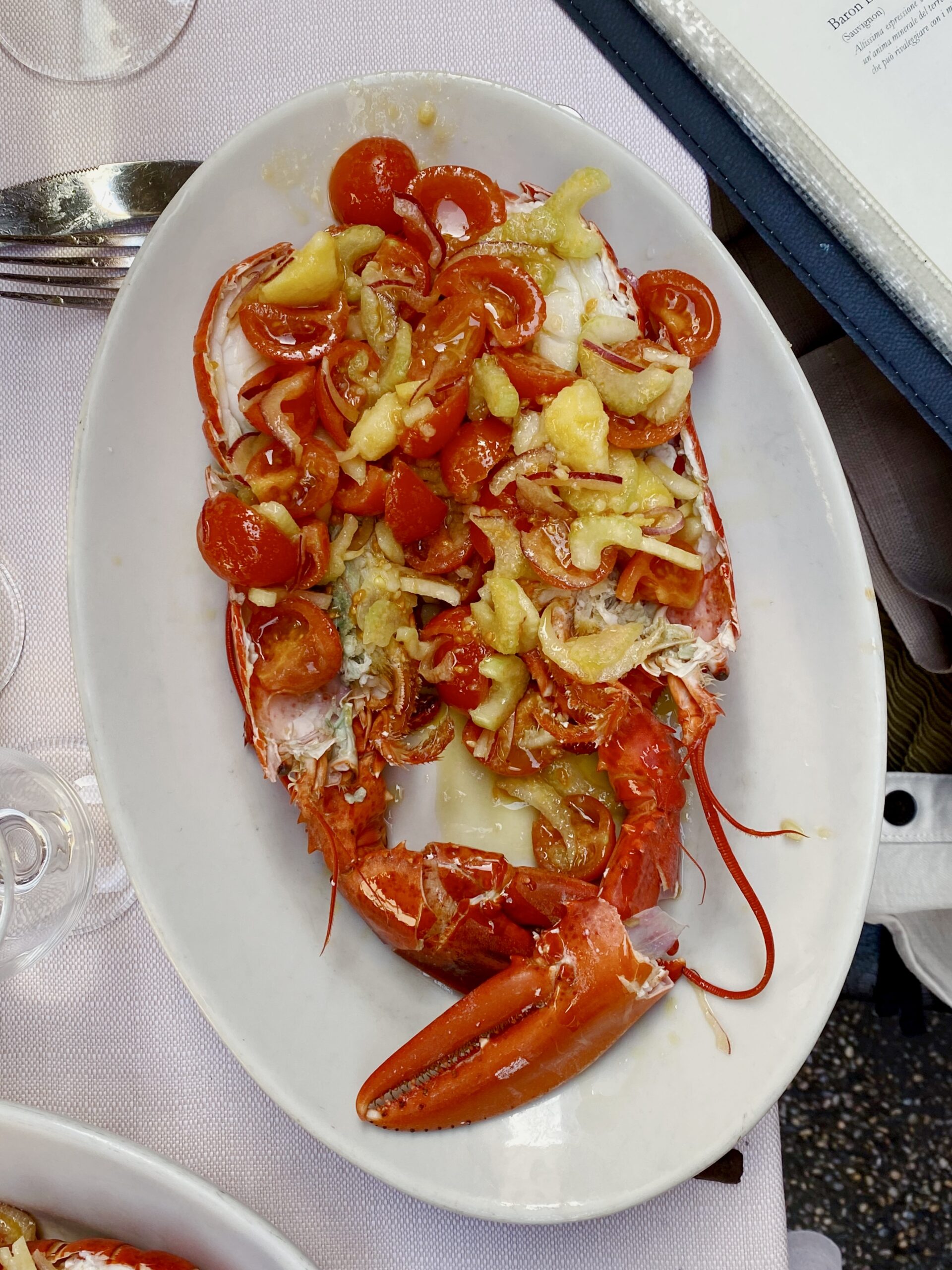
Filindeu & Lorigghitas
If you like a culinary scavenger hunt, or for things to be difficult, try to find and eat two exquisite and incredibly rare Sardinian pasta shapes: filindeu (threads of God) and lorigghitas.
For many years, you could count on one hand the women in Sardinia who knew how to make filindeu—an incredibly difficult process kept secret within one matrilineal line. Twice a year, this family fed filindeu to pilgrims who walked overnight for eight hours from Nuoro to the sanctuary of San Francesco in Lula. Now, thanks to the story of this rare pasta spreading like wildfire around the internet, and the nuoresi women opening up about the recipe, we know that filindeu begin as hand-pulled noodles stretched into otherworldly proportions: fine strands about the size of a human hair. (For a laugh, watch Jamie Oliver attempt the technique—no shade to him, Barilla failed at it too.) These threads of God are spread over a large wooden disc called a fundu, 256 at a time, to create a massive, three-layer circle reminiscent of cheesecloth. These circles bind together after drying in the sun and are then broken into fragments that look like paper-thin slices of shredded wheat. The pieces are then cooked in mutton broth with fresh pecorino. It’s awe-inspiring to see the intense devotion required to make something as beautiful as those huge, see-through circular sheets of filindeu, just to break and cook them into near-dissolving wisps. A few restaurants in Sardinia now serve filindeu, and you’ll also find it on menus in Vancouver, Singapore, and LA. This is good news—a near-extinct pasta shape has been saved—but one does wonder what is lost when filindeu travel so far from their spiritual home and familiar hands.
Lorigghitas, instead, look like beautiful twisted earrings, or, if you’re in the business of livestock, they may remind you of the iron rings used to tether horses and oxen to buildings. This pasta, along with filindeu, is included in the Slow Food Ark of Taste, a database of foods at risk of disappearing. Traditionally, lorigghitas were made for All Saints’ Day in the village of Morgongiori on the western side of Sardinia and paired with a rooster ragù. Apparently they were so delicious that a legend was created to discourage children from eating too many: if a child happened to overindulge, the witch Maria Pungi Pungi would pierce their tummy with a skewer so the lorighittas would come tumbling out. Lorighittas are now served across Sardinia with all sorts of sauces, from shellfish to pork to asparagus, but don’t miss trying them in their hometown at the Sagra delle Lorighittas in August every year. Just don’t overdo it—we can’t guarantee that Maria doesn’t target adult bellies as well.
Zuppa Gallurese
It’s important to distinguish that zuppa in Italian means broth-soaked bread, rather than the catch-all English term “soup”. Hailing from northeast Sardinia in the historical area of Gallura, the zuppa gallurese is a layered dish of sliced stale bread and cheese, usually a mix of a melty cow’s milk cheese (panedda or casizolu) and a harder aged cheese (like Gran Campidano, Sardinia’s answer to Parmiggiano Reggiano, or pecorino sardo). After this bread lasagne has been layered, it’s drowned in mutton stock—the precise amount of which is gleaned only through touch and experience. This is the “soupiest” step of the process. Then, a little more cheese on top, 45 minutes in the forno, and out comes zuppa gallurese. At this point it’s not wet at all, but holds its form like a slice of gooey lasagne. In a region now most known for the ultrachic Costa Smeralda and its superyachts, zuppa gallurese is a welcome reminder that everyone needs to use up old bread, and that sometimes, comfort food is the best food.
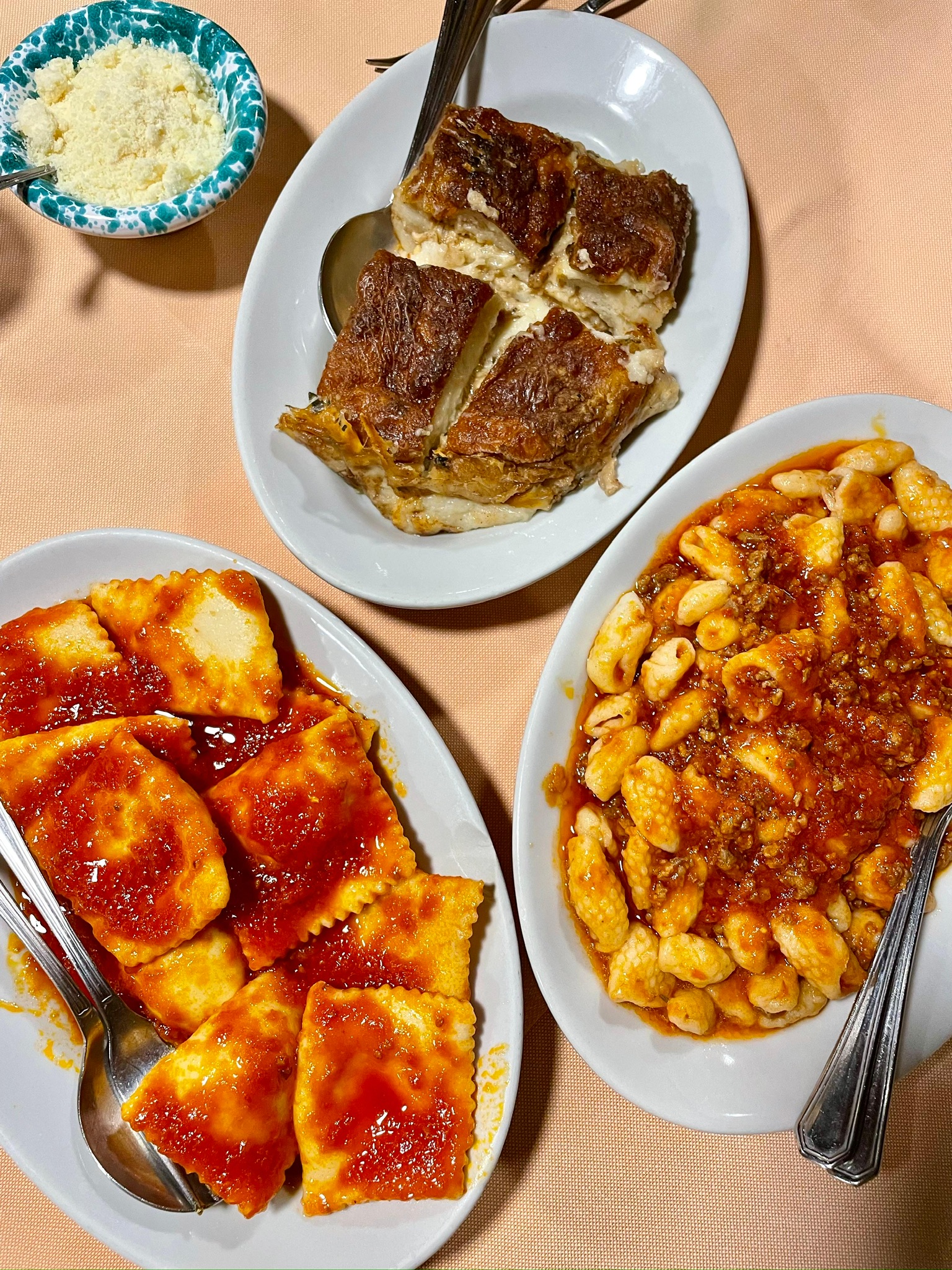
Top left: zuppa gallurese; Photo by Sara Cagle
Sa Panada
Sa panada is Sardinia’s answer to the savory pie. The crust is enriched with lard (remember that pasta violada) and the fillings can vary: meats like lamb, pork, or eel (mostly in Assemini), are combined with ingredients like potatoes, sun-dried tomatoes, broad beans, artichokes, garlic, and parsley. The telltale mark of the panada is the ornamental way in which its lid is fastened, with an exquisite pastry coil (sa cosidura) reminiscent of a diadem. The pie’s history is a little fuzzy; some point to its similarity with empanadas and therefore attribute the creation to Spanish occupation, some believe the dish came about during Roman times, while others claim that it’s actually been eaten on the island since the Nuragic times. As with many dishes on this list, each town swears by their own variation: Assemini uses eel and lamb; Cuglieri favors artichokes, fava beans, garlic, olives, and peas with their beef and lamb; and Oschiri is heavy on the lard, garlic, and parsley with their pork. The size, too, can vary, and though you’ll mostly find personal-sized panadas, Assemini is famous for their giant pot-like, folded shape.
Su Coccoi (Pane Coccoi)
Though Italians have never shied away from ugly food—from Florence’s patè di fegato to the cookies literally named brutti ma buoni—Sardinia’s catchphrase is better suited as troppo bello da mangiare, too beautiful to eat. The island’s aesthetic appreciation for all things culinary continues in the arte bianca: “white art” of breadmaking. Sardinia’s elaborately decorated breads, known as su coccoi, pane coccoi, and pani pintau, adorn tables around Eastertime and other special occasions. And unlike their Florentine counterparts, are delicious, too. Long before the obsession with fondant icing, Sardinians have been making breads that resemble Baroque basilica facades: we’re talking flowers, birds, girls, crowns, baskets, and wreaths. Often a whole, hard-boiled egg is included in the design as a nod to Pasqua—a tradition you’ll also see in Puglia’s la scarcella. Sardinia’s intricate artistry also extends to their dolci: is candelaus, for example, are like marzipan, sweets made of almond paste formed into the shapes of little shoes or baskets and topped with ornate icing, often given out like edible art at baptisms, weddings, or Easter celebrations.
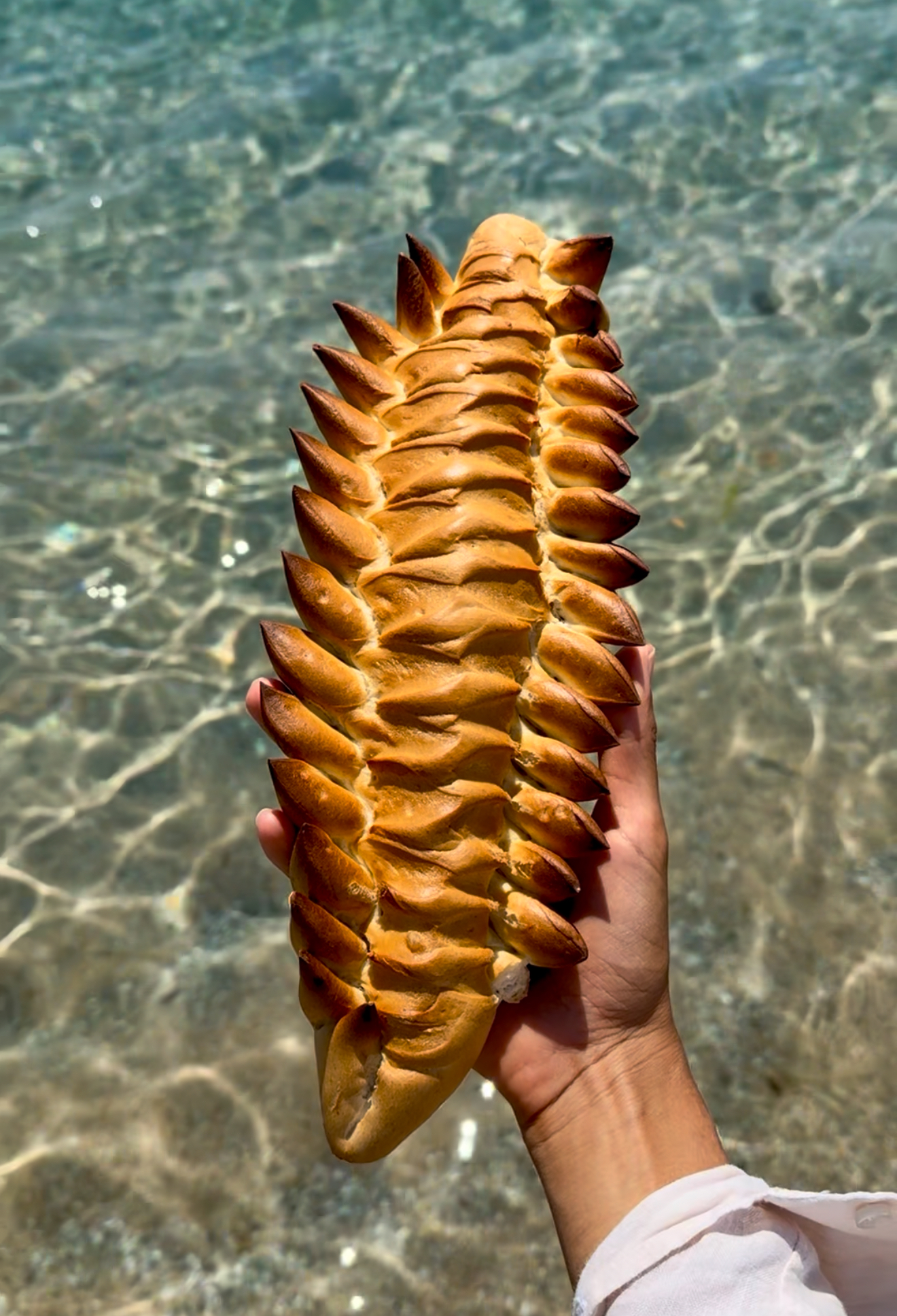
Su Coccoi
Bottarga di Muggine
When you fish gray mullet (most famously from the Cabras Lagoon in western Sardinia), carefully extract the roe pouches from the females, and cure and slowly dry these masses of eggs, you get bottarga di muggine, or butàriga in Sardinian. This ancient technique, 3,000 years in the making, was brought to Sardinian shores by the Phoenicians, who established settlements at Tharros, Othoca, Sulci, and Nora. Bottarga (aka Cabras gold) is a secret umami hit, ideal for shaving over pasta, grating over vegetables, or sliced atop bread and butter. You’ll find it on menus all across the island, though if you’re on the search for some of this cured roe for yourself, be sure to choose one with a piece of flesh (su biddiu) attached to the sacks—a mark of quality bottarga. A good place to start is Cagliari’s Mercato di San Benedetto—Italy’s largest indoor market, that’s temporarily in Piazza Nazzari until 2027 due to renovations.
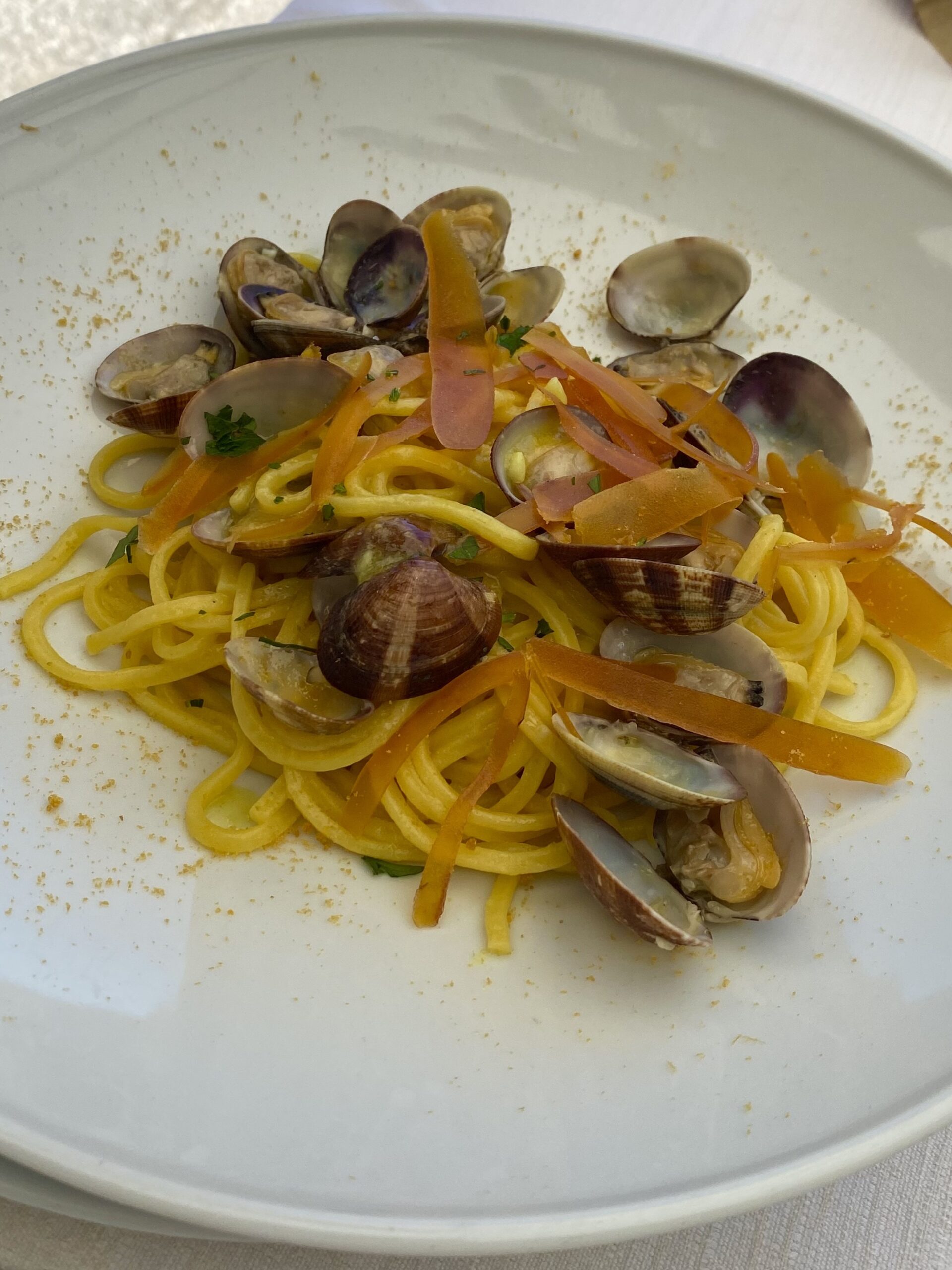
Spaghetti con vongole e bottarga di muggine
Mazza Frissa
Look quickly at mazza frissa and you might mistake it for polenta or perhaps a superfine potato purée. Also hailing from Gallura, this dish is a combination of only three ingredients: semolina, cream (historically sheep’s, but cow’s cream can be substituted), and salt. Mazza frissa is cooked slowly in a pan until it reaches a creamy porridge consistency. At a certain point during cooking, it releases oil, which is removed from the top and can be used like butter elsewhere. This step of the process is captured in the expression “sudatu come una mazza frissa” (“sweaty like a mazza frissa”). Usually, this dish is served with the island’s famous honey and pane carasau, but it can also be topped with bottarga or even used as a sauce for pasta or gnocchi.
Orziadas
For the adventurous eaters, Sardinia has a seafood dish for you: orziadas’ unassuming, pakora-like appearance belies some fascinating facts. 1) Though they are indeed a lightly-battered fritter as they appear, the ingredient inside is one you’ve likely never eaten: sea anemone (anemonia sulcata). 2) Sea anemones are related to jellyfish, and anyone who watched Finding Nemo will know they have stinging tentacles. This is why chefs don gloves when cleaning them, but don’t worry—cooking neutralizes their danger. The flavor of orziadas is very intense and of-the-sea, and their texture is similar to sweetbreads. Appreciated particularly in Oristano and Cagliari, orziadas are often hard to find—they must be hand-caught and recent overfishing has become an issue. But if you do spot them on a menu, it’s a true Sardinian experience.
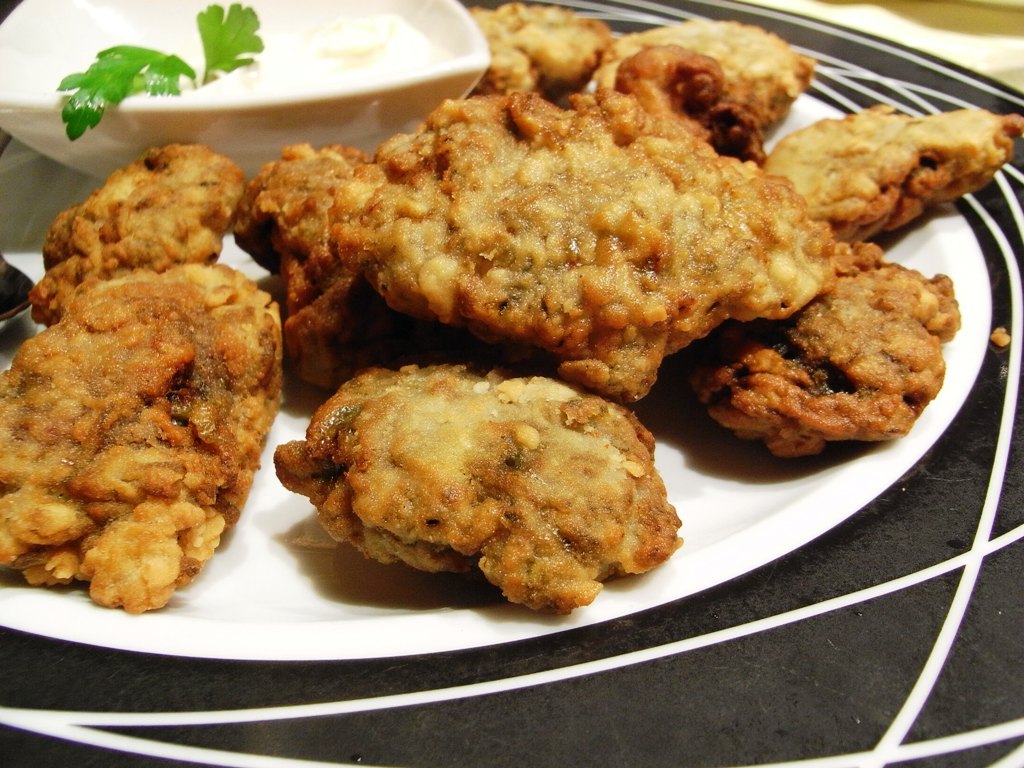
Orziadas
Su Mustazzeddu de Tamatiga
As if Italy needed more delicious ways to combine tomatoes and flour, Sardinia offers us su mustazzeddu de tamatiga, a focaccia crust encasing gemlike tomatoes and basil. It’s a sort of galette meets bruschetta. Also called prazzira, pratzida, pizza sarda, focaccia sarda, and su pani cun tamatiga, this dish comes from the southwest area of Sulcis, known most for its mining history, Carignano del Sulcis DOC wine, and the mini Genova town of Carloforte. History says that nuns invented this dish to distribute to the poor, as it was heartier than a simple loaf of bread but still easy to carry. Today, the most festive place to cut into one is at the Sagra de Su Mustatzeddu de Tamatiga held in Iglesias in August—recently named a “Sagra di Qualità” by Italy’s pro loco union—though you can find the flavor bombs up and down the island.
Cannonau
One theory as to why Sardinia has more centenarians than almost anywhere in the world is, believe it or not, their red wine: Cannonau. Scientists have found that Cannonau has three times the flavonoids of other red wines, compounds with strong antioxidant properties that can maintain healthy blood pressure, reduce heart disease, and lower stress. Besides this wine’s elixir vitae properties, it’s also just delicious to drink: ruby red in color and full-bodied, with notes of cherry, myrtle, and oregano. Cannonau has a DOC designation and is made throughout the island, but winemakers in the central-eastern province of Nuoro are particularly good. When you toast a glass of Cannonau, skip the usual “Salute!” and try the Sardinian “a kent’annos!”: may you live to 100!
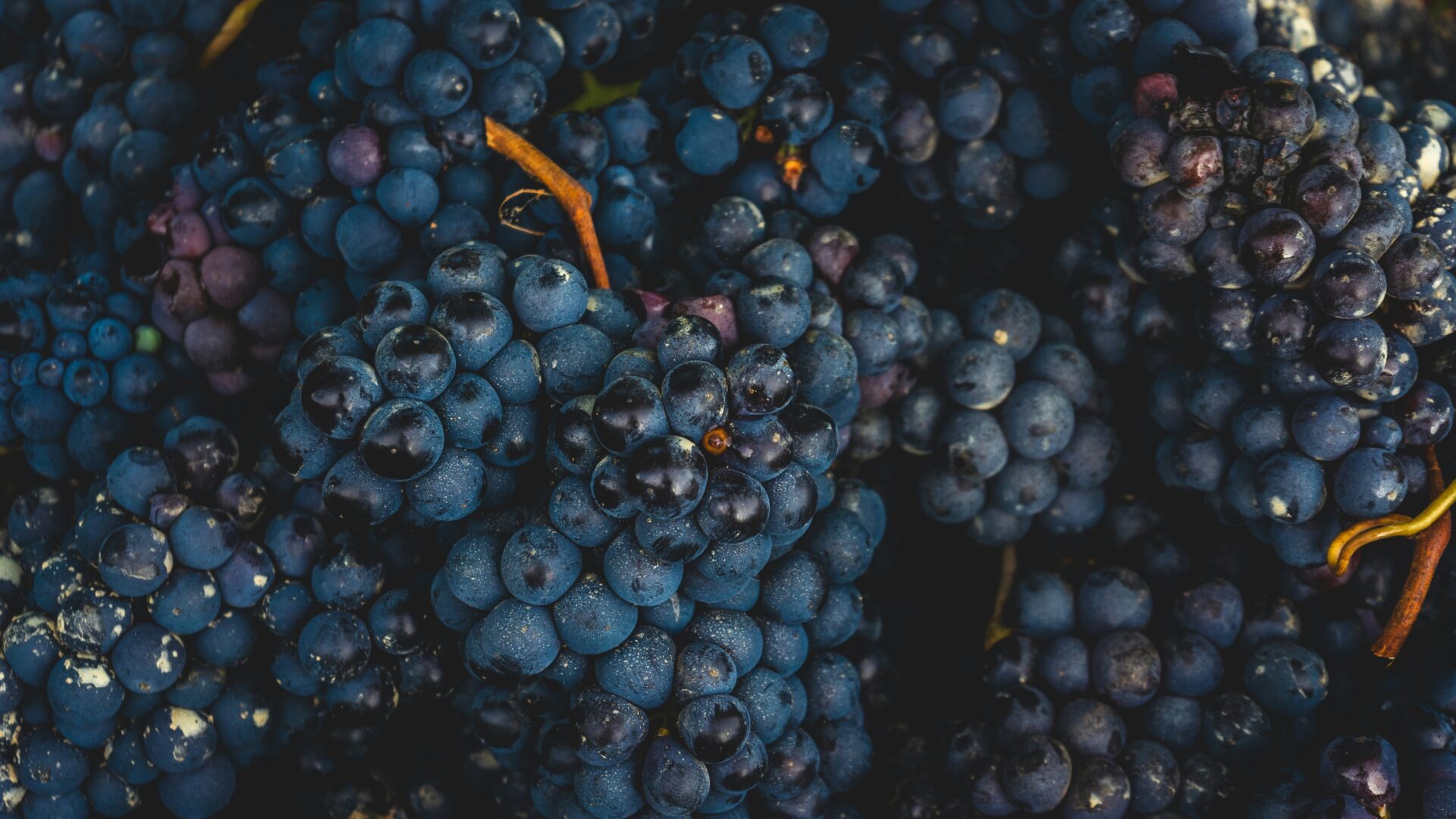
Bunches of cannonau grapes
Trofie alla Carlofortina
When you reach Carloforte, a town on the Isola di San Pietro in the southwest of Sardinia, you may start questioning how long that ferry was from Portovesme—did you fall asleep and go all the way to Genova? Pizzerias sell farinata, the Ligurian chickpea flatbread, from huge cast-iron pans; sunbathers pack focaccia with their towels for a day at the beach; and the primi sections always include pesto. Trofie alla carlofortina is one such pasta dish: the short, twisted, Ligurian pasta shape is paired with its best friend, pesto alla genovese, but gets a Sardinian twist with cherry tomatoes and tuna (Carloforte’s tuna is recognized worldwide—visit at the end of May for its Girotonno festival). This cross-Mediterranean blend is the result of Genovese coral fisherman, who founded Carloforte in the 18th century after spending 200 years in Tunisia on the island of Tabarka. Residents of Carloforte and the Isola di San Pietro are still called tabarchini and speak tabarchino, a mix of 16th-century Genovese dialect and words derived from Arabic and French.
Pecorino (And Other Cheeses)
Sardinia is a pastoral land, and one that boasts a rich cheese culture. The headliner is Pecorino Romano DOP, a sheep’s milk cheese that’s central to both Sardinian and Roman tradition thanks to a brief migration in the 19th century. Pecorino Romano’s cousin is the beloved Pecorino Sardo DOP: richer, but less salty. Casu axedu, on the other hand, is a soft, tangy, uncooked cheese made with sheep’s or goat’s milk, eaten fresh, often cut in cubes, with salads. Sardinian cheese at its most elemental, however, is Fiore Sardo DOP. Dating back to the Bronze Age, the complex cheese is the oldest pecorino on this list. Shepherds used to smoke the rind of the sheep cheese with mastic or myrtle wood in their pinnettos (huts), and use the cardo flower (hence fiore) as a natural rennet. You can taste these traditional flavors if you buy Fiore sardo dei pastori, a designation by Slow Food for small producers in Barbagia that still make it like their ancestors.
And then of course there’s casu marzu, the infamous pecorino fermented by maggots. Shock value aside, this technique is actually widespread across Italy (in Lombardia they have nisso, in Abruzzo marcetto, in Friuli saltarello, in Calabria casu du quagghiu, and in Emilia-Romagna furmai nis cui saltarei): the cheese is left outside with holes cut into the rind to invite flies (Piophila casei) to lay their eggs inside, so the larvae can work the cheese into a pungent, gooey, squirming delicacy. Due to potential risks of gastrointestinal distress, the EU has deemed this cheese illegal, so you’re unlikely to find it on a visit to the island. Despite the countrywide zest for “jumping cheese,” stick with the ones that don’t wriggle—Sardinia has a delicious bounty of these too.
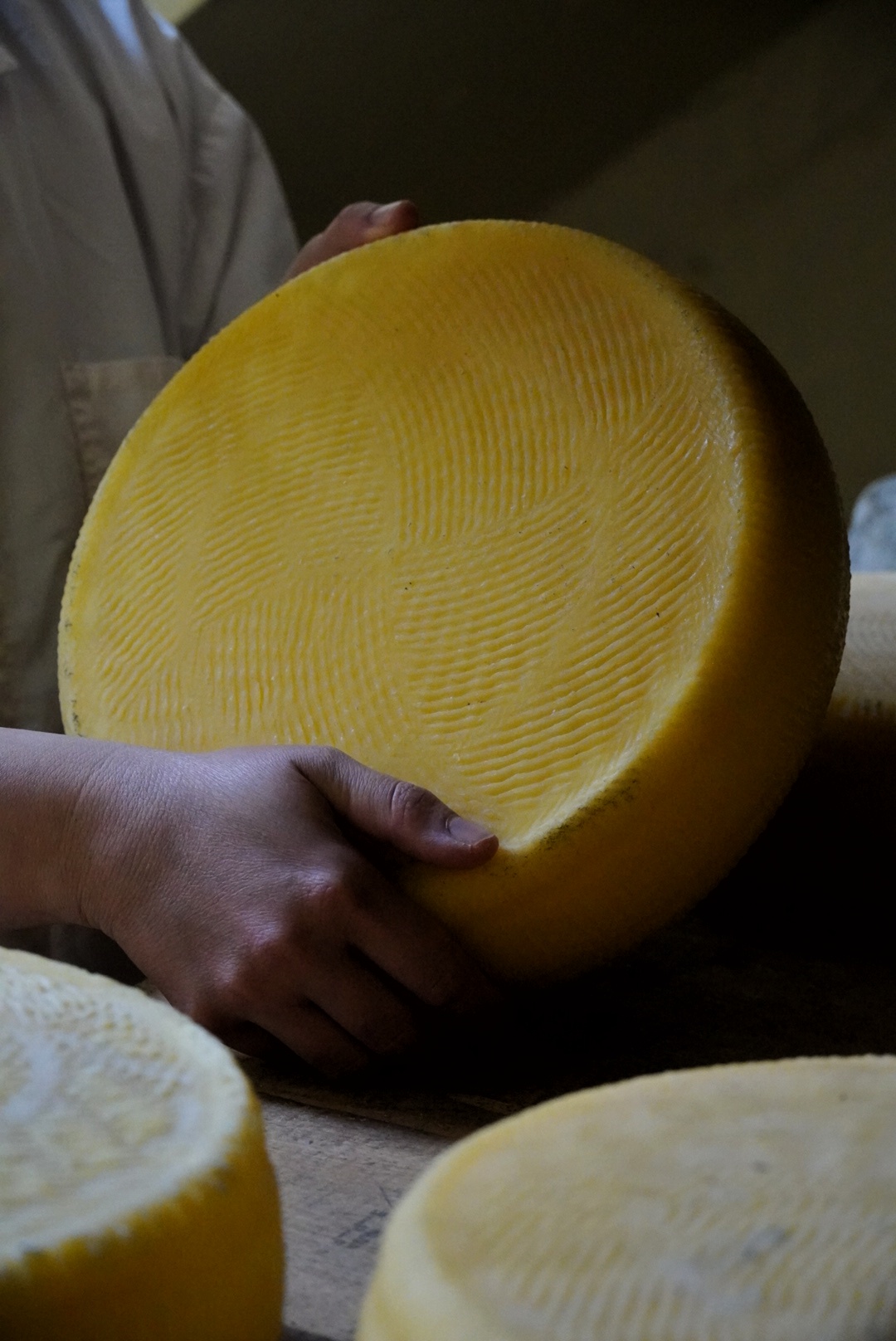
Photo by Giacomo Manca
Pardulas
For a little sunshine on a cloudy day, these sweets do the trick. Traditionally prepared for Easter but now available year-round, they look like little suns with pastry shell rays and a round, puffy ricotta center. Called formagelle in Italian, the dessert’s center pairs sheep’s milk ricotta with orange zest and saffron—turning them yellow. Pardula recipes change around the island: in Nuoro, pecorino is used and the desserts are called casadinas; in Barbagia and Ogliastra, raisins are incorporated; and in San Vito, pardulas are not little suns, but rosettes. Sardinians can afford to use the world’s most expensive spice because this “red gold” is cultivated right on the island, namely in the towns of San Gavino Monreale, Turri, and Villanovafranca. You’ll better understand this spice’s price point after learning about production: harvest occurs at dawn for three weeks in autumn, and must be done by hand. Then, the three crimson stigmas must be plucked from each flower—also by hand—moistened lightly with oil, and set to dry. Quite a feat.
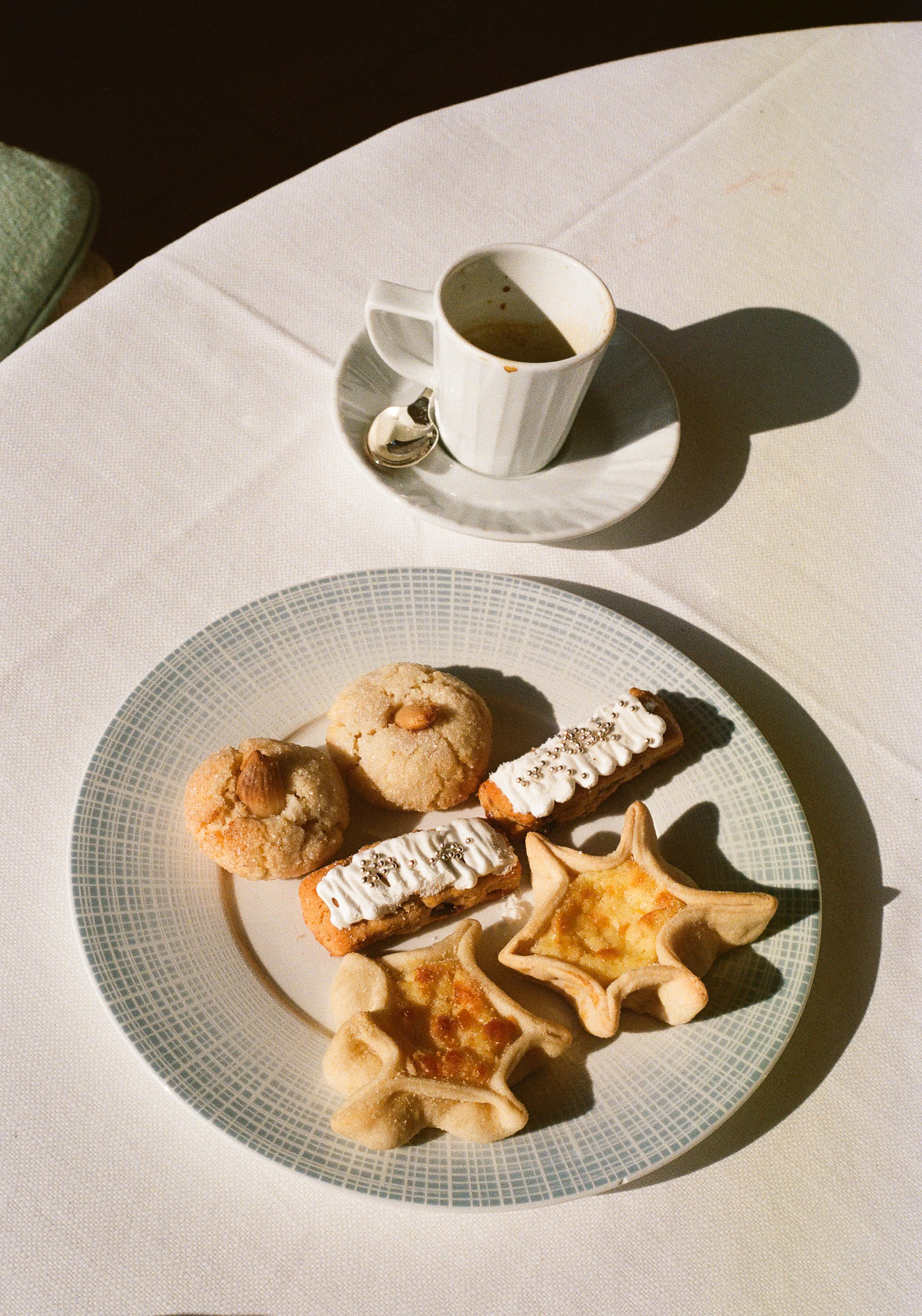
Pardulas
Mirto
If you’ve eaten in a restaurant or home in Sardinia, you’ve likely been offered mirto at the end of your meal. This beloved amaro, herbal and bittersweet, is the most popular digestivo on the island; what some argue is Sardinia’s essence. The liqueur smells like the land itself—it’ll transport you to hikes through Mediterranean scrub—as it’s made from the dark blue (and more rarely white) berries of the myrtle shrub. This evergreen is central to Sardinians—its branches hug porceddu while it’s cooking underground and its smoke perfumes Fiore Sardo DOP. If you find yourself on the Emerald Coast in August, head inland to the town of Telti for their annual Sagra del Mirto to sip on mirto in all its forms. Or, our favorite way to drink it: at an agriturismo, after a hearty meal, when the proprietor brings out an unlabelled bottle of homemade mirto—he likely picked the berries himself.
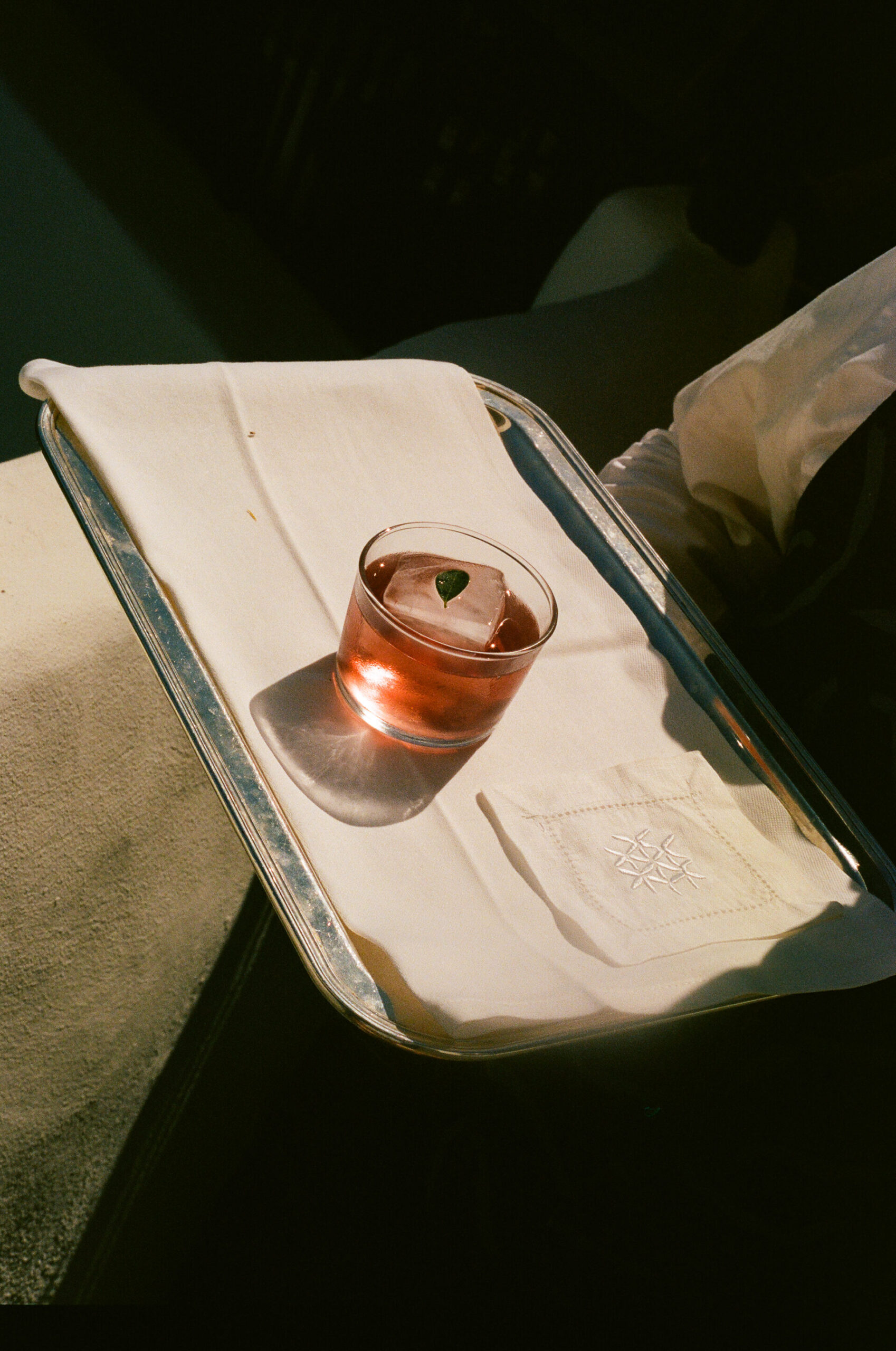
Mirto
